PARLIAMENT

RICHEST INDIVIDUALS SHAPING OUR WORLD 10
RISHI SUNAK ACCEPTS PUBLIC SECTOR PAY RISE RECOMMENDATION OF MORE THAN SIX PER CENT
Turki Aldakhil, Jameel Altheyabi & Dr. Ibrahim Al-Muhanna, The Voices of Change and the Saudi Masters of the Pen
THE CROSSROADS OF INNOVATION: THE COMPLEX AI DILEMMA CAN AI REPLACE HUMAN INTELLIGENCE?












PRINCE WILLIAM THE CHAMPION OF CHANGE
UNITED KINGDOM’S LONG-RUN PROSPERITY HINGES ON AMBITIOUS REFORMS

THE SHIFTING RETAIL LANDSCAPE: ADOPTING ONLINE PLATFORMS TO THRIVE IN THE UK

SUMMER
| WINTER 2023/24
PARLIAMENTARY SOCIETY FOR ARTS FASHION AND SPORTS MAGAZINE
NEWS
In an age where voices often get lost amidst the noise of daily happenings, this magazine stands as a clarion call to those in positions of influence and authority. It is more than just a compilation of articles and features—it's a heartfelt letter to our esteemed representatives both in the UK and globally. We strive to bring to the forefront the burning issues, the unspoken struggles, and the fervent hopes that pulse within the heartbeats of our diverse society. Through these pages, we illuminate the urgent matters that require prompt attention, hoping to usher in responsive action.
But beyond drawing attention to issues, we also take immense pride in spotlighting the changemakers among us—individuals and organizations that tirelessly work to shape our society for the better. We celebrate their crafts, their innovations, and their indomitable spirits. By showcasing their stories, we hope to inspire countless others to tread on paths of positive change and impactful leadership.
To our distinguished officials, consider this magazine as an invitation into the lives, hopes, and aspirations of the people you represent. Each page provides insight into the tapestry of experiences that form the backbone of our society. Let this magazine be the bridge that connects governance with the governed, the policymakers with the people, and the visionaries with the grassroots. In its essence, it's an homage to the indomitable spirit of humanity—a testament to the collective will that seeks understanding, unity, and progress.
We urge you to delve deep, to understand, to empathize, and to act. For within these pages lies the heart of a society yearning to be heard, seen, and understood. Let's craft a brighter future, hand in hand, with renewed commitment and collaboration.
 Rebeca Riofrio Editor in Chief Parliament News Magazine
Rebeca Riofrio Editor in Chief Parliament News Magazine
2

3
 Photo by Simon Dawson / No10 Downing Street
Photo by Simon Dawson / No10 Downing Street
PRINCE WILLIAM THE CHAMPION OF CHANGE

THE MODERN MONARCH: PRINCE WILLIAM'S VISIONARY LEADERSHIP IN CHARITABLE ENDEAVORS AND FAMILY
 UNITY
UNITY
 BY CAMILLA DUKE
BY CAMILLA DUKE





Caring for Minds: Championing Mental Health
Prince William's compassionate spirit extends to the realm of mental health. In 2017, he led the groundbreaking Heads Together campaign alongside The Princess of Wales and The Duke of Sussex. This coalition of eight mental health charities aimed to challenge stigma, raise awareness, and provide vital support for individuals grappling with mental health issues. The campaign's lasting impact has been evident through initiatives like the #HeadsUp campaign, which uses football to spark open conversations about mental health among men.
Honoring Service and Sacrifice: Supporting the Armed Forces
With a deep sense of gratitude for the nation's defenders, Prince William dedicates his charitable pursuits to support and honor the Armed Forces. Having served full-time military service himself, His Royal Highness shines a light on the challenges faced by service personnel transitioning to civilian life. His compassionate initiatives seek to ensure they receive the care and assistance they deserve in recognition of their service and sacrifice.
The Royal Patron: A Role of Significance
As Patron of several organizations aligned with his philanthropic interests, Prince William extends his unwavering support to key projects focused on preserving the natural world and alleviating societal hardships. His Royal Highness's dedication to promoting better protection of the environment and supporting those facing challenging circumstances stands as a testament to his commitment to making a positive difference.

A Royal Foundation for Change
Together with The Princess of Wales, Prince William directs his charitable endeavors through The Royal Foundation. Driven by world-class research, long-term partnerships, and measurable impact, this foundation mobilizes leaders, businesses, and individuals to address society's most pressing challenges. With a deep belief in the power of collaboration, The Royal Foundation seeks to create lasting change and transform lives for the better.
In times of change and uncertainty, Prince William, the Prince of Wales, stands as a paragon of compassion and dedication. His unwavering commitment to championing environmental preservation, mental health advocacy, support for the homeless, and honoring the Armed Forces serves as an enduring inspiration to all. As the future of the royal family, His Royal Highness embodies the very essence of benevolence and responsibility—a true ambassador for positive change in the world. May his legacy continue to shine brightly and inspire generations to come.
breakup in 2007, before their royal wedding in 2011.
• 11. Sibling Dynamics: William’s relationship with Prince Harry has been playful, supportive, and recently, complicated.
• 12. Hair Loss Humor: Though teased for his thinning hair, William keeps a light-hearted attitude about it. A Relatable Royal
• 13. Pursuit of Normalcy: Contrary to what many might think, Prince William insists they are a “normal family,” focused on raising good people.

• 14. A Supportive Brother: Despite tensions, William's care for Harry and his family is evident, especially in recent times after Queen Elizabeth’s death.
• 15. The "Common" King: William's perspective on kingship is grounded. He’s more concerned about his family's wellbeing and values than the throne itself.
Prince William's blend of royalty and relatability, along with his dedication to service, makes him a fascinating figure in modern history. These glimpses into his life reveal a man striving to balance duty, tradition, innovation, and family—a complex task that he seems to approach with grace and determination.
9

RISHI SUNAK ACCEPTS PUBLIC SECTOR PAY RISE RECOMMENDATIO N OF MORE THAN SIX PER CENT
BY THE PARLIAMENTARY SOCIETY PRESS OFFICE

PRIME MINISTER RISHI SUNAK HAS ACCEPTED THE INDEPENDENT PAY REVIEW BODY'S RECOMMENDATIONS, LEADING TO PAY INCREASES OF OVER 6.5% FOR MILLIONS OF PUBLIC SECTOR WORKERS IN 2023-24. TEACHERS AND JUNIOR DOCTORS WILL RECEIVE 6.5% AND 6% PAY RISES, RESPECTIVELY, WHILE POLICE, PRISON OFFICERS, AND ARMED FORCES PERSONNEL WILL SEE RAISES OF 6% AND FIVE TO SIX PERCENT. THE GOVERNMENT WILL NOT FINANCE THESE PAY RISES THROUGH ADDITIONAL BORROWING, LEADING TO CUTS OF UP TO £2 BILLION IN OTHER AREAS. THE DECISION HAS ENDED PLANNED STRIKES AMONG TEACHERS, WITH A JOINT STATEMENT FROM EDUCATION UNIONS EXPRESSING OPTIMISM FOR A HARMONIOUS FUTURE. HOWEVER, INDUSTRIAL ACTION PERSISTS IN THE HEALTH SECTOR, WITH JUNIOR DOCTORS EMBARKING ON A FIVE-DAY WALKOUT. THE GOVERNMENT'S COMMITMENT TO FISCAL PRUDENCE AND ECONOMIC STABILITY REMAINS STEADFAST IN THIS TRANSFORMATIVE CHAPTER FOR PUBLIC SECTOR REMUNERATION.

11
In a momentous decision, Prime Minister Rishi Sunak has officially ratified the independent pay review body's recommendations, paving the way for substantial pay increases exceeding 6.5% for millions of public sector workers in the fiscal year 2023-24. With unwavering resolve, teachers are granted a 6.5% pay rise, while junior doctors receive a commendable 6% increment. Not to be outdone, police officers, prison officers, and armed forces personnel will witness notable increases of 6% and five to six percent, respectively. Such significant pay adjustments have necessitated fi nancial acrobatics, compelling the government to identify cuts amounting to £2 billion across departments.
A collective sigh of relief emerges from the teaching community as the pay rise announcement puts an end to looming strikes. It is indeed heartening to witness the convergence of the government and education unions in a rare joint statement. Unity prevails as ASCL, NAHT, NASUWT, and NEU express their optimism, hoping the new pay deal will herald an era of harmonious relations between the government and the unions.
To fi nance these pay rises, the government adheres to fi scal prudence, refusing to resort to additional borrowing. As the Prime Minister accentuates, taxes shall not be raised indiscriminately, and higher borrowing is shunned, for it engenders in fl ationary pressures. Consequently, government departments shall bear the onus of identifying savings and efficiencies from within their budgets to offset the costs of enhanced remuneration for public sector workers. As a measure to augment funds, the NHS health surcharge for migrants shall be raised, alongside visa charges.
Pay review bodies, those eminent sources of guidance on appropriate remuneration for public sector


THE BRITISH BEACON:
UNITED KINGDOM’S LONG-RUN PROSPERITY HINGES ON AMBITIOUS REFORMS
 CHAIRWOMAN
CHAIRWOMAN







 REBECA RIOFRIO
FOR THE PARLIAMENTARY SOCIETY FOR ARTS UK
REBECA RIOFRIO
FOR THE PARLIAMENTARY SOCIETY FOR ARTS UK

Sailing through Economic Uncertainties: The United Kingdom's Compass towards Growth
The State of the Economy
As the UK dodges a recession this year, the winds of change have been turbulent in the country's economic landscape. With growth projected to remain a modest 1.2% in 2023, we face challenges arising from the ripple effect of Russia's activities in Ukraine and the energy price shocks. Despite this, the inflation rate remains at 3.8%, higher than the Bank of England's target of 2%, triggering the authorities to tighten monetary policies. Interest rates received a boost in June, and fiscal policies have followed suit.
Challenges and Responses
The UK's struggles are not superficial; they delve deep beneath the surface. Real business investment has declined by 2.5% in the last quarter, and productivity has been stagnant. However, the authorities have formulated a plan to combat these issues. The "Windsor Framework," coupled with the Chancellor's "4Es" strategy targeting highproductivity growth areas with a £10 billion budget, aims to steer the nation towards stability.
Economic Revival Initiatives
In a bid to rekindle growth, the government's economic revival initiatives include tax incentives worth £3 billion and public infrastructure investment of £20 billion over the next five years. Additionally, changes in pension regulation could unlock £100 billion in higher-return projects. These strategies could potentially transform the economy, making it more robust and resilient.
Focus on Health and Education

Investing in the nation's most treasured asset, health, is paramount. £500 million has been allocated to targeted mental health interventions. The government also aims to offer quality apprenticeships and career counseling, targeting 100,000 new apprenticeships by 2024. This includes supporting women, whose labor force participation rate stands at 70.2%, to join the workforce.
Governance and Financial Policy
The financial landscape in the UK has been tumultuous, with the near-collapse of pension funds leading to a £1.5 billion bailout. Governance, too, has been under scrutiny, with markets reacting sharply during the brief and chaotic premiership of Liz Truss, during which the FTSE 100 fell by 4.2%. The subsequent calming of UK assets under exfinance minister Rishi Sunak has led to reforms that include a £2 billion budget to support emerging sectors like green finance, expected to grow by 8% annually over the next decade.
The UK's economic waters are indeed stormy, but with ambitious reforms, strategic investments, and steadfast governance, the horizon looks promising. The figures and strategies outlined in this analysis not only mark the path we've traversed but also light the way forward. Let us embrace these winds of change and steer our beloved United Kingdom towards innovation, growth, and a prosperous future. Here's to the British spirit, resilient and enduring, that faces challenges head-on and charts its course with wisdom and courage.
16
economic framework, contrasting sharply with the landscape we navigated in the preceding months. The key highlights of this report are:
1. Revised Growth and Inflation Projections:
Compared to the May Report, the latest assessment reflects a more subdued growth forecast, with inflation expectations revised upward. The inflation rate is expected to temporarily reach the 4% mark, fueled by energy prices and core goods price inflation.
2. Interest Rates and Monetary Policy:
As the inflationary pressures grow, the Bank of England has made decisive moves in monetary policy. The adjustments to the interest rate and the decision to maintain the stock of sterling non-financial investmentgrade corporate bond purchases at £20 billion underline a commitment to stability.
3. Labor Market Dynamics:
The labor market exhibits promising signs of recovery, with a decline in the unemployment rate. However, it is essential to note that a discrepancy remains between sectors, with some still far from pre-pandemic levels.
4. Global Considerations: The report pays heed to the global economic scenario, highlighting risks and uncertainties. Global GDP growth is expected to moderate, and the interplay between the UK and the global economy, particularly the impact of the European Central Bank's policies, remains a vital consideration.
5. Future Outlook:
The underlying message of the report is one of caution and vigilance. With uncertainties surrounding the Omicron variant, energy prices, and geopolitical tensions, the Bank of England maintains a flexible stance, ready to adapt to unfolding events.
The August Monetary Policy Report thus paints a nuanced picture of the UK's economic trajectory, emphasizing the delicate balancing act between growth, inflation control, and responsiveness to global factors. It complements our earlier analysis, providing a complete view of the economic landscape as the UK charts its course through these turbulent times.
By reflecting on both these analyses, the path towards innovation, growth, and a prosperous future for the UK becomes more tangible. Continued vigilance, strategic investments, and sound governance will be essential in steering the nation toward stability and resilience.
Read the full Bank of England Monetary Policy Report (August 2023)
This summary not only offers an overview of the vital points in the Bank of England's report but also ties it back to the broader themes of economic growth, governance, and policy-making in the UK. It can serve as a valuable addition to the main article, offering readers an integrated perspective on the UK's economic direction.

17
UK SUICIDE STATISTICS:








UNVEILING THE COMPLEX PATTERNS AND SHIFTING REALITIES EXPLORING THE INSIGHTS FROM THE HOUSE OF PARLIAMENT REPORT HOUSE OF COMMONS | BRIEFINGS |CBP-7749


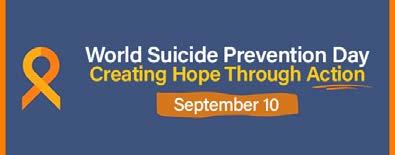


Understanding the Multifaceted Landscape
Nobody wants to talk about suicide or admit familiarity with its harrowing grasp, yet the alarming statistics paint a stark reality. Every 40 seconds, a precious life succumbs to suicide worldwide, and within the UK, a staggering 115 individuals meet this tragic fate each week – a somber toll where 75% of these losses are borne by men (ONS). The shadows of despair loom large, with 1 in 5 people wrestling with suicidal thoughts (NHS Digital), and the alarming truth reveals that 1 in 14 individuals engage in self-harm, defying the misconception that such actions are solely rooted in diagnosed mental illnesses. Even as technology advances and the virtual world expands, a paradoxical isolation emerges, exacerbated by the perceived "success" paraded online. Against this disheartening backdrop, the House of Parliament's research delving into these intricate statistics assumes paramount significance, offering a beacon of understanding within this complex reality.

Suicide is an issue that strikes at the heart of societies, causing immeasurable pain and loss. As of late, a report presented at the House of Parliament has unveiled a profound insight into the somber landscape of suicide statistics across Great Britain. This briefing, conducted on 2nd December 2022, delves into the comprehensive data from various sources including the Office for National Statistics (ONS) in England and Wales, the National Records of Scotland, and the Northern Ireland Statistics and Research Agency
1. Summary and Background: Laying the Foundation
The report provides a comprehensive overview of the multifaceted data on suicide, encompassing different age groups, regions, and socio-economic dimensions. The research underlines that suicide statistics should be interpreted cautiously, considering the intricate interplay of registration delays, occurrences, and the societal context, especially amidst the challenges posed by the pandemic.
2. Trends in Great Britain: A Glimpse into the Past
One of the report's focal points is the exploration of the trends in suicide within Great Britain since 1981. In the year 2020, there were 6,319 registered deaths attributed to suicide. A critical insight drawn from this data is that while the actual number of suicides has risen, the age-standardized mortality rate, adjusted for changes in population, remained relatively stable. This paradox is largely due to the increase in the overall population over the years.
The suicide rate in England and Wales has displayed a significant decline of 28% since 1981. Despite variations in rates between 2005 and 2021, the report acknowledges that the overall trajectory has been downward. However, the year-on-year variations signify the complexity of the issue and the ongoing need for vigilance and intervention.
3. Data for UK Countries: Regional Disparities
The report delves into the suicide rates within different UK countries, uncovering noteworthy disparities. While the data from Scotland only provides an age-standardized rate from 1994 onwards, it has been observed that Northern Ireland, over the years, has faced a higher suicide rate compared to other UK nations. This imbalance has prompted investigations and improvements in data collection and reporting.
20
4. Differences by Age and Sex: Peeling Back the Layers
The impact of age and sex on suicide rates is a significant area of focus in the report. Strikingly, suicide rates among men in England and Wales are three times higher than among women. Over the years, the gender gap has widened, highlighting the need for gender-specific approaches in suicide prevention.
Age-wise, the data unveils a complex narrative. Those aged between 45 and 54 exhibit the highest risk of suicide, while those under 20 and over 70 display the lowest risk. The intricate analysis reveals that the suicide rate among men and women follows a broadly similar age pattern, although the gap varies across different age groups.

5. English Regions: Disparities Across the Landscape
Geographical disparities are another critical aspect illuminated by the report. Regional differences in suicide rates within England have become apparent. The North East and Yorkshire & Humber regions have exhibited higher suicide rates compared to other regions, while London displays the lowest rate. The study underscores the need for localized interventions to address these regional variations.
6. Deprivation: Socio-Economic Dimensions
The report sheds light on the profound impact of socio-economic conditions on suicide rates. Individuals residing in the most deprived areas are at a significantly higher risk of suicide compared to those in the least deprived areas. This revelation highlights the importance of addressing social inequality and providing targeted support to vulnerable communities.
7. Registrations, Occurrences, and Pandemic Impact: Navigating Uncertain Waters
A crucial aspect brought to the forefront by the report is the nuanced relationship between registrations and actual occurrences of suicide, particularly during the pandemic. The pandemic-induced registration delays have added layers of complexity to interpreting the data. While the number of suicides registered in 2020 was lower than in 2019, the analysis underscores the importance of cautious interpretation and the role of delayed registrations in influencing the numbers.
In conclusion, the House of Parliament's report on suicide statistics serves as a poignant reminder of the profound complexities inherent in understanding and addressing this critical issue. The data provided unveils a tapestry of trends, disparities, and challenges that demand a multi-faceted and empathetic response from policymakers, communities, and society at large. It emphasizes the urgency of developing holistic strategies that encompass prevention, awareness, and support, to bring hope and healing to those affected by this silent crisis.

21

THE CROSSROADS OF INNOVATION: THE COMPLEX AI DILEMMA




CAN AI REPLACE HUMAN INTELLIGENCE?
MAN VS TECHNOLOGY: THE ETERNAL PARADOX
 BY BRENDAN O’CONNOR
BY BRENDAN O’CONNOR
The rhythm of progress in our world often unfolds with a measured cadence, punctuated by sporadic bursts of transformative change. It is this dance between the known and the unknown that characterizes the evolution of human society. In recent months, this tempo has quickened to a crescendo, ushering in a new era that has redefined our understanding of the world in profound ways.
The introduction of OpenAI's ChatGPT in November 2022, swiftly followed by Google's Bard and other comparable advancements, has dramatically shifted the trajectory of technological progress. Suddenly, the oncedistant vision of an AI-driven world has been brought tantalizingly close. These breakthroughs, built upon the foundation of Large Language Models (LLMs) such as GPT-4, with their billions of parameters, have democratized access to powerful tools capable of generating text and images through neural networks. The result has been an explosion of applications across a diverse range of sectors. This newfound accessibility, coupled with user-friendly interfaces, well-crafted APIs, and a cost-effective model, led to over a million users embracing these technologies within a mere five days. The discourse surrounding ChatGPT's transformative potential has become ubiquitous, resonating through news outlets, academic journals, and international conferences. Although ChatGPT is still in its infancy, a recent survey by Statistica reveals that over 40% of the adult population in the US is already familiar with the technology.
However, this surge in innovation represents more than a momentary technological leap. It signifies a pivotal juncture in the ongoing digital transformation. As the discussions shift from merely introducing new technologies to digitize existing practices, a broader conversation has emerged—one that delves into the implications, challenges, and societal impacts of this AI revolution.
The Pause Paradox: The Call for Reflection
The growing clamor for a temporary halt to AI advancement has become a litmus test for our understanding of the digital transformation and its future trajectory. In an open letter that boasts signatories including Elon Musk and Steve Wozniak, a plea was made for a six-month suspension of AI systems more advanced than GPT-4. This call for a pause stems from the belief that robust planning and management must precede the development of powerful AI systems.
At the heart of this appeal lies the realization that unbridled AI acceleration carries the potential for unforeseen consequences. While ChatGPT and similar technologies offer unprecedented creative potential, the ethical, legal, and societal implications that accompany them remain largely uncharted territory. The concern extends beyond mere authenticity of AI-generated content; it delves into the underlying values and principles that drive these creations.
Consider, for instance, the prospect of AI-generated responses devoid of ethical considerations. Such responses may appear plausible and credible, yet they can be incomplete, misleading, or outright false. Reports from those utilizing ChatGPT highlight its "dangerous creativity"—an attribute that has no bounds, be they moral or factual.
This scenario has the potential to yield unsettling outcomes. Cassie Kozyrkov, Chief Decision Scientist at Google, aptly labels ChatGPT as "the ultimate bullshitter." While it may provide ostensibly accurate responses, it lacks the critical discernment required to ascertain the validity of its answers. The indiscriminate dissemination of information, irrespective of its veracity, could undermine societal trust and exacerbate the spread of misinformation.
Furthermore, the unfettered availability of ChatGPT raises questions about its implications across various domains. Its potential to generate text on demand has far-reaching consequences. Consider the ramifications if every student uses ChatGPT to craft essays, if companies rely on it to generate software code, and if social media platforms are flooded with AI-generated content. This proliferation has profound implications for knowledge-based professions, intellectual property rights, and the very fabric of our information ecosystem. How will society navigate a landscape where discerning human-generated content from AI-generated content becomes an arduous task? The potential disruptions are manifold and necessitate rigorous contemplation.
24

25
IN A WORLD WHERE INNOVATION KNOWS NO BOUNDS, THE COMPLEX INTERPLAY BETWEEN HUMAN INGENUITY AND TECHNOLOGICAL ADVANCEMENT TAKES CENTER STAGE. AS ARTIFICIAL INTELLIGENCE (AI) SURGES FORWARD, IT CHALLENGES THE VERY ESSENCE OF HUMAN INTELLIGENCE. WHILE AI DEMONSTRATES REMARKABLE FEATS, FROM INTRICATE CALCULATIONS TO CREATIVE OUTPUTS, IT REMAINS BOUND BY ITS PROGRAMMING AND DATA LIMITATIONS. THE TRIUMPH OF HUMAN CREATIVITY, EMOTIONAL INTELLIGENCE, ETHICAL REASONING, AND THE PROFOUND DEPTH OF HUMAN EXPERIENCE STAND AS A TESTAMENT TO OUR UNIQUE ROLE IN THE GRAND NARRATIVE OF PROGRESS. THE FUTURE LIES NOT IN A RIVALRY BETWEEN MAN AND MACHINE, BUT IN A HARMONIOUS PARTNERSHIP WHERE AI AMPLIFIES OUR CAPABILITIES, ENABLING US TO UNRAVEL MYSTERIES, PUSH BOUNDARIES, AND ORCHESTRATE A SYMPHONY OF INNOVATION. AS WE NAVIGATE THIS INTRICATE DANCE, LET US EMBRACE AI AS A TOOL FOR EMPOWERMENT, WHILE HUMANITY RETAINS ITS POSITION AS THE ULTIMATE CONDUCTOR OF A TIMELESS MASTERPIECE.
26
Divergent Horizons: Progress Versus Prudence
The ongoing discourse revolves around two competing perspectives: those advocating for a deliberate pause and those advocating for unabated progress. Those favoring a pause underscore the imperative for equitable and thoughtful AI deployment. They contend that existing governance, legal, and ethical frameworks must be fortified before we embark on a full-scale AI revolution.
Conversely, proponents of continued momentum emphasize that AI's trajectory is an inevitability. They argue that responsible AI deployment, bolstered by stringent safety measures, is essential for realizing the transformative potential of AI across diverse domains.
As nations and corporations vie for dominance in the digital realm, a geopolitical struggle for AI supremacy ensues. The race for technological ascendancy mirrors the broader power dynamics at play. China's strides in AI technology, coupled with its strategic application across various sectors, position it at the forefront of the global AI race. This pursuit is driven by the availability of high-speed processors and the accumulation of vast datasets, creating a foundation for a digital renaissance. The implications of this race extend beyond technology, permeating questions of sovereignty, security, and human rights.
The Pursuit of Balance: Navigating Complexity
In the wake of recent AI breakthroughs, a wave of excitement has swept across industries, igniting a fervor for exploration and innovation. However, this rapid adoption of AI has also ignited a spirited debate surrounding its responsible integration. The call for a temporary six-month pause on advanced AI systems has amplified these discussions.
This call to pause prompts us to reflect deeply on the complex interplay between technological advancement and societal implications. Are we advancing too swiftly into uncharted territories, or must we embrace the unfolding narrative of AI's role in shaping our digital landscape? Both perspectives are grounded in valid concerns, and it is imperative that we acknowledge and understand the nuances of each.
In the land of technology, the acceleration of AI holds the promise of a new era defined by unprecedented efficiency and innovation. However, as this tide rises, it brings with it a set of challenges that demand our immediate attention. The potential misuse of AI-generated content, the erosion of truth and authenticity, and the concentration of power in the hands of a few necessitate a critical evaluation of the pace of our progress.
At the same time, a world without the continued march of AI innovation would be a world deprived of its immense potential. The ability to harness AI's capabilities for medical research, climate modeling, education, and beyond presents an opportunity to address some of the most pressing global challenges.
As we navigate this complex confluence of perspectives, it becomes evident that the path forward requires a delicate equilibrium. A harmonious coexistence of innovation and prudence is necessary to fully unlock AI's transformative power while safeguarding against its potential pitfalls.
The Triumph of Humanity: The Intrinsic Supremacy
In this captivating analysis, let us contemplate the boundless prowess of the human mind and its irreplaceable role in the grand tapestry of existence. While AI astonishes us with its rapid evolution, it is imperative to recognize that its ascendancy is complemented by the unparalleled attributes of human intelligence.
Humanity's cognitive capacity extends beyond logical algorithms and data-driven calculations. It encompasses intuition, creativity, empathy, and ethical discernment—qualities that are integral to our complex nature. The
27
human experience is replete with emotional nuances, cultural context, and moral considerations that elude the grasp of even the most advanced AI systems.
Artificial Intelligence can indeed assist people with repetitive and time-consuming jobs. But, can AI take over humans? The answer is simply, NO!
Reasons Why AI Will Never Replace Humans
No Emotional Intellect: Human beings possess emotional intellect through which they can show emotions, express feelings, and read people instantly. For instance, businesses cannot use AI as a substitute for all their customer service. Customers want to have personal communication as robots are not capable of showing compassion and sentiments to customers.
Can't Work Creatively: As the implementation of Artificial Intelligence is at a pace, human beings get an opportunity to take on increasingly creative jobs. Not only in the creative sector but also in finance or coding, human beings need to be extra creative to work and accomplish great projects.
Lacks Empathy: Humans can share their feelings: enjoyment, sadness, happiness, hope, gratitude, optimism, kindness, and others. Furthermore, it is hard to digest that AI can show all expressions and read other people’s emotions more favorably than a human being can do.
Can't Think Outside the Box: Artificial Intelligence can’t discover creative ways of resolving various rising problems because its code does not support it. It is well known that robots are coded to work within their frame. AI or Artificial Intelligence is not proficient in thinking critically through convoluted scenarios, analyzing context, developing complicated strategies.
Intuition and Gut Instincts: The human mind is endowed with a remarkable gift— intuition. It is an amalgamation of experiences, knowledge, and subconscious processing that allows us to make swift and informed decisions even in the absence of complete information. AI relies on algorithms and logical reasoning, while humans possess an innate ability to trust their intuition, making judgments that extend beyond the realm of pure logic.
Dynamic Learning and Adaptability: Human beings are lifelong learners, constantly evolving and adapting to new situations and challenges. Our capacity to acquire new knowledge, develop new skills, and adapt to changing circumstances gives us an edge over AI. Humans possess the ability to generalize knowledge from one domain to another, transfer skills across diverse tasks, and synthesize information from various sources.
Ethical Decision-Making: Ethics and morality lie at the heart of human society, influencing our choices and actions. While AI can adhere to programmed rules and guidelines, it lacks the intrinsic ethical reasoning and moral responsibility that humans possess.
Man vs Technology: The Eternal Paradox
In this captivating analysis, let us delve deeper into the intriguing dynamic between human ingenuity and technological advancement. The relentless march of technology, driven by Artificial Intelligence (AI), has ushered in an era of unprecedented innovation. Yet, as the realm of AI expands, it is essential to examine the intricate interplay between human intelligence and technological capability.
The Strides of AI: Triumphs and Limitations
AI's ascension is undeniable. It has surpassed human capabilities in specific tasks, demonstrating prowess in complex calculations, data analysis, and pattern recognition. Deep learning algorithms power AI systems to achieve remarkable feats, from mastering intricate games to diagnosing medical conditions with remarkable accuracy. However, beneath this veneer of brilliance lies a stark truth: AI remains confined by its programming and data limitations. It lacks the nuanced understanding, emotional intelligence, and consciousness that define human cognition.
28
The Human Ingenuity: Nurturing Innovation
The wellspring of human creativity knows no bounds. Our ability to imagine, innovate, and create defies replication. AI may mimic artistic styles, compose music, and generate text, but it does so through learned patterns. It lacks the inherent spark of inspiration that fuels human artistic expression. The essence of creativity lies in pushing boundaries, defying conventions, and imbuing creations with profound meaning—qualities that remain beyond AI's reach.
Beyond Logic: The Subtle Art of Emotion
Emotions are the tapestry of human experience, weaving depth and texture into our lives. While AI can recognize and emulate emotions, it does so algorithmically. True emotional intelligence transcends recognition; it involves empathy, compassion, and the ability to navigate complex interpersonal dynamics. Human emotions are intertwined with our consciousness, shaping our decisions, relationships, and understanding of the world—a realm untouched by AI.
Ethics and Morality: The Moral Compass
The ethical compass that guides human actions emerges from a complex interplay of culture, philosophy, and empathy. AI's ethical decisions are predetermined by programming and data, devoid of the nuanced moral reasoning that humans possess. Our moral dilemmas are not confined to rule-based systems; they involve context, intention, and the intricate web of human values. AI's ethical framework is a reflection of human input, underscoring its dependence on our moral guidance.
Collaboration, Not Replacement
The eternal debate of man versus technology underscores a fundamental truth: AI is a tool, not a replacement. The convergence of human intellect and AI's computational power holds transformative potential. As AI augments our capabilities, it extends the frontiers of what we can achieve. The future lies in harnessing this symbiotic relationship, where AI enhances our problem-solving, amplifies our creativity, and accelerates scientific discovery.
The Complex Enigma: AI's Role in Humanity's Story
In the grand tapestry of human progress, AI is a thread woven with complexity and promise. Its role is not to supplant human ingenuity, but to amplify it. AI's computational prowess can unravel mysteries, simulate complex systems, and drive innovation. However, it is our responsibility to imbue AI with ethical considerations, ensuring it serves humanity's best interests.
In the end, the paradox of man versus technology is an eternal dance—a convergence of innovation and creativity. As we step into an era where AI's potential knows no bounds, let us remember that our humanity is the source of inspiration, empathy, and the unquenchable thirst for knowledge. AI may be the instrument, but humanity remains the maestro of its symphony.
29
UNMASKING THE PERILOUS ALLURE OF 'GET RICH QUICK' SCHEMES: THE ESCALATING MENACE OF INVESTMENT FRAUD

METROPOLITAN POLICE REPORT



In a fast-paced and digitally interconnected world, investment opportunities that promise quick financial gains have been captivating young professionals. However, beneath the alluring facade lies a sinister reality – a staggering £890 million was lost to investment fraud in the 2021/22 financial year, representing a daunting 49.5 percent surge from the previous period. This alarming data, sourced from the National Fraud Intelligence Bureau (NFIB), reveals the escalating gravity of the situation, with 26,170 reports of investment fraud to Action Fraud during the same period, leaving victims grasping an average loss of £34,043.41 each.
The landscape of deceit is evolving as criminals adapt their tactics, now targeting victims on social media platforms. Social media has become fertile ground for these fraudulent schemes, where many innocent individuals fall prey to the enticing allure of 'get rich quick' promises. Detective Chief Inspector Suzanne Ferris from the City of London Police, the nation's frontline force against fraud, emphasizes that investment fraud wreaks havoc on individuals and families alike. With the ongoing cost of living crisis, there is a looming fear that more individuals may succumb to these devastating frauds in desperate pursuit of financial relief.
The perpetrators of investment fraud have not forsaken traditional 'cold calling' tactics, but they have grown more sophisticated in their use of social media. Recent data reveals that cases of investment fraud rose by 15.2 percent in the last financial year compared to the previous period, with young professionals emerging as the most vulnerable demographic.
Astoundingly, 39 percent of all investment fraud victims are between the ages of 20 to 39 years, demonstrating the dire consequences of these scams on the aspirational dreams of young individuals. Furthermore, individuals aged 40 to 49 years represent the third-highest age demographic, accounting for 16 percent of all victims.
One concerning avenue employed by fraudsters is the use of social media influencers to endorse their fraudulent schemes. By utilizing influencers with vast followings, criminals can swiftly and inexpensively expose their scams to a broader audience. Tragically, these well-meaning influencers unwittingly assist in spreading deceit, as innocent victims are lured into making unauthorized push payments on fake websites or inadvertently disclosing personal and banking information through social engineering techniques, such as remote access tools or deceptive phone calls.
Parallel to the rise of social media-influenced scams, there has been a noteworthy surge in investments into cryptocurrencies, with Bitcoin topping the list of the most reported currencies. This emerging trend poses additional challenges to those seeking to protect themselves from fraudulent practices.
In light of these escalating threats, it becomes imperative for individuals to be vigilant and equipped with the necessary knowledge to identify and evade such deceitful traps. The City of London Police, National Fraud Intelligence Bureau (NFIB), and Action Fraud offer essential advice under the 'Take Five to Stop Fraud' campaign:
1. STOP: Pause and take a moment to think before parting with your money or information. Taking a moment to reflect can keep you safe from potential harm.
2. CHALLENGE: Exercise skepticism and discern whether the opportunity could be fraudulent. Reject, refuse, or ignore any requests that seem suspicious or rushed, as genuine enterprises would never pressure you in such a manner.
3. PROTECT: In case of any suspicion, promptly contact your bank and report the incident to Action Fraud. Protect yourself and others by sharing information about fraudulent activities.
To fortify one's defenses against investment fraud, it is essential to undertake thorough research before committing to any investment endeavor. Trusted advice from family and friends can serve as a valuable guiding compass. Additionally, one
32
must remain cautious when asked to change money into cryptocurrency for investment purposes, as it is often employed as a ploy by fraudsters.
Stay vigilant and exercise utmost caution when encountering investment opportunities on social media. Fraudsters may hack social media accounts to propagate bogus investments under the guise of a friend or family member's recommendation. Always verify the authenticity of such endorsements before proceeding.
Fraudulent entities often create sophisticated websites and use fake business premises to deceive unsuspecting victims. Ensure thorough investigation and due diligence before engaging in any financial transactions.
Lastly, never allow anyone to take control of your phone or computer, as this is a red flag indicative of a potential scam.

The City of London Police, in coordination with the NFIB and Action Fraud, spearheads a two-week-long national campaign, running from 17th to 25th October 2022, to raise awareness of the signs of investment fraud and protect individuals from the clutches of deception.
Together, let us fortify our defenses and preserve our financial well-being from the encroaching shadow of investment fraud. If you suspect that you have fallen victim to such malice, take immediate action by contacting your bank and reporting the incident to Action Fraud online at actionfraud.police.uk or by calling 0300 123 2040. For our friends in Scotland, reach out to Police Scotland on 101 to protect yourselves and your loved ones from these ruthless predators.

33
HISTORY & CULTURE | DIALOGUE
DR. J. ROBERT OPPENHEIMER:
THE MAN BEHIND THE ATOMIC BOMB
 BY THE PARLIAMENTARY SOCIETY PRESS OFFICE
BY THE PARLIAMENTARY SOCIETY PRESS OFFICE


STEP INTO THE INTRICATE TAPESTRY OF DR. J. ROBERT OPPENHEIMER'S LIFE, WHERE BRILLIANCE DANCES WITH DILEMMA, AND KNOWLEDGE WALTZES WITH WISDOM. AS WE GAZE UPON THE PORTRAIT OF THIS ENIGMATIC VISIONARY, MAY WE BE REMINDED THAT THE PURSUIT OF DISCOVERY CARRIES THE WEIGHT OF HUMANITY'S BETTERMENT, ECHOING THE TIMELESS REFRAIN: "HE DOESN'T SLOT INTO EASY CATEGORIES... HE'S A TRICKY FIGURE."HISTORIAN ALEX WELLERSTEIN.
A PINNACLE OF PARADOX
Delving into the annals of history, one encounters figures whose profound shadow casts ripples through time. Dr. J. Robert Oppenheimer, a name resonating through the corridors of human progress, emerges as a paradoxical enigma. As Christopher Nolan's forthcoming cinematic opus seeks to unveil his story, let us embark on a journey through the eloquent tapestry of this legendary physicist, exploring the intricate interplay of brilliance, moral contemplation, and the profound implications of his epochal creation.
INCEPTION OF BRILLIANCE: A COSMIC PRELUDE
Born amidst the vibrant pulse of New York City in 1904, Julius Robert Oppenheimer emerged as a prodigious luminary. The son of German Jewish immigrants, his heritage wove a tapestry of intellectual richness. Swiftly ascending the academic echelons, he graduated summa cum laude from Harvard University within a mere triennium. His scholarly pursuits extended across the venerable halls of Cambridge University and the University of Göttingen, culminating in a doctorate earned at the tender age of 23.
The moniker "Oppie" resounded amongst scientific luminaries of his age, emblematic of his prolific contributions. His pursuits transcended theoretical physics, delving into diverse realms such as Sanskrit scholarship, religious exploration, and alignment with progressive ideals. A polymath of modernity, Oppenheimer's brilliance illuminated the cosmos in unanticipated hues.
PIONEERING THE MANHATTAN PROJECT: A SYMPHONIC CONFLUENCE
The tapestry of history beckoned to Oppenheimer as the specter of World War II loomed large. Entrusted with the orchestration of the Manhattan Project, he found himself at the helm of an incognito endeavor destined to recalibrate human destiny. Nestled within the arid embrace of New Mexico's deserts, Oppenheimer summoned the preeminent minds of his generation to the sanctum of Los Alamos Laboratory. Here, amid the crucible of inquiry and collaborative fervor, the seeds of an extraordinary creation were sown.
Oppenheimer, the maestro of scientific endeavor, wielded his conductor's baton with unwavering grace. His resolute presence, both intellectual and corporeal, infused the enterprise with an aura of unparalleled enthusiasm and intellectual ardor. The crescendo of this symphony culminated on July 16, 1945, as Oppenheimer stood on the threshold of the Trinity test site, bearing witness to the inaugural bloom of nuclear power. A moment poised on the precipice of eternity, akin to Vishnu's somber dialogue in the Bhagavad Gita: "Now I am become Death, the destroyer of worlds."

36
 J. Robert Oppenheimer (right) with Albert Einstein at the Institute for Advanced Study, 1947.
J. Robert Oppenheimer (right) with Albert Einstein at the Institute for Advanced Study, 1947.


38
The aftermath of nuclear warfare
The aftermath of nuclear warfare
ECHOES OF CONSCIENCE: AN AFTERMATH OF AWE

The detonation of atomic maelstroms over Hiroshima and Nagasaki cast a stark luminescence upon Oppenheimer's path – a con c triumph and moral disquietude. As the world grappled with the fallout of unprecedented devastation, Oppenheimer found himself at once lauded and haunted. He had contributed to the birth of an uncharted epoch, yet the toll of innocent lives weighed heavily upon his soul.
In the wake of cataclysmic events, Oppenheimer's voice reverberated through the corridors of power. His advocacy for nuclear deterrence and staunch opposition to the unchecked proliferation of more potent arms showcased his deep-seated concern for humanity's trajectory. Oppenheimer, the erudite philosopher-scientist, interwove his convictions into a tapestry of principled resistance against the rising crescendo of Cold War tensions.
EPILOGUE: THE SYMPHONY OF LEGACY
As the final crescendo of his life's symphony drew near, Oppenheimer eschewed conventional cadences. The inception of the World Academy of Arts and Sciences marked a harmonious fusion of scientific prowess and ethical contemplation. Until his passing in 1967, Oppenheimer's resonant voice echoed across lecture halls, harmonizing with the clamor of nuclear arms.
The tale of Dr. J. Robert Oppenheimer, elegantly complex and beguiling, beckons us to tread upon the terrain of scientific exploration with reverence. It is a narrative replete with brilliance and moral dilemma, meandering through valleys of human achievement and scaling peaks of profound introspection. Oppenheimer's legacy resounds as a symphony of knowledge and sagacity, a timeless reminder that the realm of discovery bears not only laurels but also the eternal responsibility to wield the fruits of understanding for the betterment of humankind.
39
The aftermath of nuclear warfare

REVIVING TAXFREE SHOPPING: ACCESS TO PROSPERITY AND TOURISM

 BY THE PARLIAMENTARY SOCIETY PRESS OFFICE
BY THE PARLIAMENTARY SOCIETY PRESS OFFICE


In the area of evaluating VAT refund systems for international tourists, the Centre for Economics and Business Research (Cebr) has cultivated an esteemed proficiency. A multitude of reports spanning diverse jurisdictions bear witness to Cebr's authoritative voice in discerning the intricacies of costs and advantages intrinsic to these schemes. Moreover, our erudition was summoned to illuminate the court of appeal in opposition to the UK's decision to forsake the tax-free shopping initiative in 2021. Despite our meticulous analysis that illuminated the clear economic merits underpinning a VAT refund system, along with the exposé of analytical fallacies in the government's calculations, the cessation of the scheme endured. Adjudicators opined that, irrespective of the original decision's rectitude, the courts bore no mandate to overturn a political decree of such nature.
Fast-forward two years, we have revisited these figures to gauge the extent of economic atrophy and job deprivation afflicting the UK economy, emanating from the absence of an incentive for international visitors –an amenity they luxuriate in across a myriad of global locales, particularly within the European Union's precincts. Once the UK was enshrouded by EU regulations, tax-free shopping was confined solely to non-EU patrons. The present potential for reaping economic benefits far eclipses prior prospects, as the enticing prospect of an effective tax reprieve beckons all international visitors, transcending the bounds of nationality.
This seminal report was formally unveiled at the commencement of the week, as a pivotal facet of the 'Scrap the Tourist Tax campaign'. The coalition, boasting endorsement from the vanguards of 350 preeminent retailers and brands in the UK, manifests a resounding call for reinstating the waning allure of tax-free shopping.
The crux of our findings are encapsulated thus:
The Centre for Economics and Business Research propounds that the revival of the scheme would unleash additional revenues, eclipsing the losses attributed to VAT reimbursements, by a substantial £2.3 billion in the year 2023.
The campaign garners immense patronage, as testified by 350 luminaries encompassing the spheres of British Airways, Marks & Spencer, Harvey Nichols, Primark, Burberry, Heathrow, Gatwick, Victoria Beckham, the Royal Opera House, British Fashion Council, Fenwick, Charlotte Tilbury, UKinbound, Tate, The Really Useful Group, Shakespeare's Globe, Southbank Centre, and Bicester Village. An open missive penned to the


Chancellor, orchestrated by the esteemed hotelier Sir Rocco Forte, lambasts this decision as an "astounding self-in nation's economic vitality. Regrettably, this verdict has af unwarranted epithet upon the UK, designating it the costliest emporium on the European expanse. While the EU territories continue to extend the allure of tax rebates to foreign shoppers, the UK's appeal wanes.
Inscrutable calculations by the Treasury pertaining to the ostensible cost of tax-free shopping conspicuously ignore the consequential outlays made by tourists in their lodging, gastronomical sojourns, theatre rendezvous, museum explorations, and even public transport. Furthermore, a burgeoning trend among UK shoppers entails cross-border expenditures, with VAT reimbursements effectively defraying their travel expenses.
Conclusively, the Cebr report posits that eligible expenditure amenable to tax-free shopping stood at an approximate £6.6 billion in 2022, poised to escalate to an estimated £7.7 billion in the ensuing year. Assuming an unremitting 100% rate of VAT refund adoption, £1.1 billion and £1.3 billion could have been channelled back to customers via VAT reimbursements for 2022 and 2023, respectively.

Per a visitor-centric calculus, these refunds could have wrought a 4.2% reduction in the UK visitation expenditure. Relying upon the principle of demand elasticity in relation to price, this diminution would have engendered an in 1.7 million visitors in 2022, crescendoing to a substantial 2.0 million in the subsequent year.
In corollary, if these incremental visitors were to mirror the expenditure patterns of their predecessors, an additional £1.4 billion and £1.7 billion would have coursed

10 RICHEST INDIVIDUALS SHAPING OUR WORLD








In the grand tapestry of global economics, politics, and philanthropy, billionaires are the master weavers, conjuring threads that shape nations and define eras. As of 2023, the prestigious Forbes list chronicles a count of 2,640 billionaires worldwide, each with a narrative distinct and enthralling. At the apex of this rarefied assembly stands a modern-day visionary, the maestro orchestrating the crescendo of two behemoths – Tesla and SpaceX – Elon Musk, whose net worth swells to an astounding $238 billion.
This assemblage, hailing from divergent corners of the planet, coalesce into a league that transcends distinction. A significant cohort here are the architects of technological dominions, their fortunes entwined with the empires they engineered. Yet, even amidst this elite throng, the strategies for wealth preservation vary: leveraging wealth to defer capital gains taxes, capitalizing on a litany of tax deductions to offset income, and in some instances, paying no income tax at all.

The billionaires on this list find themselves poised at a delicate nexus, their wealth intimately intertwined with the public valuations of the companies they commandeer. An alteration in stock markets can sway their fortunes with the tides, a reality that renders their financial dominion all the more intriguing. Without further ado, let's unravel uent individuals on the global stage, in accordance with the august Bloomberg Billionaires Index, as
1. Elon Musk: The Innovation

At the vanguard, stands Elon Musk, a polymath whose name has become synonymous with innovation. With a fortune of $238 billion, Musk wears the dual crowns of Tesla and SpaceX, along with the ownership of Twitter. Musk's saga is one of audacity and brilliance – he founded Tesla in 2004, which has burgeoned into a frontrunner in the electric vehicle industry. Beyond automobiles, Musk’s SpaceX aims to revolutionize space travel. This South African-born entrepreneur, with a degree in physics and economics, has crafted a saga of triumph marked by the daring launch of Zip2, the birth of PayPal, the transformation of Tesla, and the audacious buyout of Twitter. His narrative embodies the essence of transformative entrepreneurship.
2. Bernard Arnault: The Luxury Titan
Bernard Arnault, a French maestro of luxury, follows with a net worth of $196 billion. He helms the luxury powerhouse LVMH, steering brands like Louis Vuitton and Sephora. With a cant chunk of wealth accruing from his stake in Christian Dior, Arnault exemplifies how an astute businessman can meld artistry and commerce.



48
3. Jeff Bezos: The ECommerce Luminary
With a fortune of $157 billion, Jeff Bezos, the architect of Amazon, stands tall as a modern titan. His brainchild, which germinated as an online bookstore, has burgeoned into an e-commerce colossus. The brain behind the ubiquitous Amazon, Bezos extended his influence to aerospace with Blue Origin and journalism with The Washington Post, forging a multifaceted legacy that embodies the 21st-century entrepreneur.




4. Bill Gates: The Tech Philanthropist


Bill Gates, a name synonymous with technology, clinches the fourth position with a net worth of $137 billion. Having co-founded Microsoft, Gates is an architect of the digital age, whose imprint extends beyond the virtual realm. Noteworthy is his unparalleled philanthropic zeal, with billions dedicated to global health and education through the Bill & Melinda Gates Foundation.
5. Larry Ellison: The Software Virtuoso
Larry Ellison, an American business magnate with a net worth of $133 billion, is a pioneer in the software industry. Co-founder of Oracle, Ellison's name is etched in tech history for creating the fi rst commercial relational database program. His ventures extend into diverse domains, including ownership of Tesla equity and ventures like Blue Origin.

49
Larry Page, with a net worth of $119 billion, epitomizes the audacious ambition of Silicon Valley. Co-founder of Google (now part of Alphabet), Page, alongside Sergey Brin, fashioned a search engine that metamorphosed into a tech behemoth. His journey underscores how dorm-room dreams can metamorphose into epoch-defining legacies.





At 92, Warren Buffett is a living legend. With a fortune of $118 billion, his approach to value investing is a beacon for those navigating the tumultuous sea of finance. The sage of Omaha is a philanthropic heavyweight too, with the Giving Pledge standing as a testament to his commitment to giving back.

Mark Zuckerberg's name resonates across the globe, a result of his role in creating Facebook (now Meta Platforms). His net worth stands at $117 billion, a reflection of his unparalleled in fl uence in the realm of social media and technology. Beyond Facebook, his work in philanthropy through the Chan Zuckerberg Initiative speaks volumes of his commitment to a better world.

50
6. Larry Page: The Search Engine Sage
7. Warren Buffett: The Sage of Investing
8. Mark Zuckerberg: The Social Media Maven
Steve Ballmer, with a net worth of $117 billion, helmed Microsoft during a transformative era. Under his leadership, the company diversi its portfolio while making strategic acquisitions. His ownership of the Los Angeles Clippers basketball team and involvement in philanthropy are the cornerstones of his legacy.




With a net worth of $113 billion, Sergey Brin, the co-founder of Google, commands an enduring legacy. His journey from Moscow to co-creating Google with Larry Page is emblematic of the American dream. Brin’s influence extends beyond Google, with his philanthropic endeavors and investments in groundbreaking technologies like Stadia gaming platform and Nest smart home devices.
AS WE UNRAVEL THE STORIES OF THESE WEALTHIEST TITANS, THE NARRATIVE EMERGES THAT THEIR STORIES ARE NOT JUST ABOUT RICHES AMASSED, BUT ABOUT VISIONS REALIZED, INNOVATIONS BIRTHED, AND LEGACIES WOVEN. THESE ARE THE ARCHITECTS OF MODERN ECONOMIES, SCULPTORS OF TECHNOLOGICAL MARVELS, AND THE PATRONS OF PHILANTHROPIC CAUSES THAT TOUCH LIVES GLOBALLY. THEIR STORIES ARE A TESTAMENT TO THE INDOMITABLE HUMAN SPIRIT AND THE RELENTLESS PURSUIT OF GREATNESS, LEAVING AN INDELIBLE MARK ON HISTORY.

51
9. Steve Ballmer: The Microsoft Maestro
10. Sergey Brin: The Internet Illuminator
 TURKI ALDAKHIL, JAMEEL ALTHEYABI & DR. IBRAHIM AL-MUHANNA,
TURKI ALDAKHIL, JAMEEL ALTHEYABI & DR. IBRAHIM AL-MUHANNA,

THE ILLUMINATION OF JOURNALISM: THE VOICES OF CHANGE AND THE SAUDI MASTERS OF THE PEN
PIONEERS OF INFLUENCE: NAVIGATING POLITICS, MEDIA, AND SOCIETY
 BY REBECA RIOFRIO PARLIAMENTARY SOCIETY PRESS OFFICE
BY REBECA RIOFRIO PARLIAMENTARY SOCIETY PRESS OFFICE

From the cradle of civilisation, where the Acta Diurna heralded the birth of news in 59 BCE in Rome, to the clinking noise of the Gutenberg printing press that once rang through the workshops of Germany and Antwerp, the quill of journalism has penned a magni 1702, as it laid the ink of modernity on the very fabric of society.
The journalism we celebrate today has evolved into a symphony of voices. Its manifestations stretch far and wide, encompassing the television, radio, internet, and of course, the newspapers and magazines that continue to echo the thoughts and opinions of humanity.

Through the annals of history, journalism has become the 'vox populi', translating the whispers of the masses into a resonant and harmonious cry. It is an art form that enables governments to kneel and listen, societies to re grow, and individuals to connect across borders and ideologies.
Having resided in the United Kingdom for over 28 years, I have been privy to the various shades and nuances of public opinion, particularly concerning the Middle East. The media landscape often painted a bleak picture, yet an insider's circle of international journalists has graciously shared their wisdom and rekindled a hope for a more uni world.
Allow me to introduce you to three luminous minds from the Saudi Arabian journalism become the beacon of a new narrative.
TURKI ALDAKHIL

A diplomat, journalist, and in mogul, Turki Aldakhil's expansive career has touched upon myriad aspects of the media industry. Starting his journey in journalism in 1989, he emerged as a media specialist and




DR. IBRAHIM AL-MUHANNA


An academic, advisor, and renowned energy expert, Dr. Ibrahim Al-Muhanna's career spans more than 35 years in public service and ministries, having advised four different Ministers of Energy in Saudi Arabia.
Academic Excellence: His tenure as a professor at King Saud University allowed him to impart wisdom on a range of subjects including energy, economics, politics, and communication, thereby shaping the minds of the next generation of scholars.
International Collaboration: Dr. Al-Muhanna's active participation in international forums such as OPEC, G20, and the World Economic Forum underscores his influence in forming energy policies. His roles in initiating dialogues between oil producers and consumers, and the founding of KAPSARC, highlight his commitment to bolstering international cooperation.
Literary Contributions: Dr. Al-Muhanna is a well-respected writer of various books and studies in both English and Arabic, focusing on

BENEATH THE SURFACE: NAVIGATING THE UNCHARTED TERRITORIES OF THE EARTH'S OCEANS WHY DOES MORE THAN 80% OF THE OCEAN REMAINS UNEXPLORED?











Exploring the Abyss: Unveiling the Enigmatic Depths of Earth's Oceans

In an age where we've glimpsed the far reaches of the cosmos and the intricate landscapes of alien planets, there remains an expanse that is both fascinating and enigmatic – a realm hidden beneath the waves, covering over 80% of our planet's surface. As we strive to unlock the secrets of our oceans, we unveil a captivating narrative that delves into the profound mysteries of this aquatic frontier.
In the Shadows of the Abyss
Venturing into the depths of the ocean presents an aweinspiring challenge. The ocean's abyssal depths offer little visibility, with temperatures plunging to icy extremes and colossal pressures that defy comprehension. Dr. Gene Carl Feldman, a distinguished oceanographer at NASA's Goddard Space Flight Center, aptly points out that navigating these uncharted waters is more intricate than sending explorers into space.
The pressure exerted at sea level is a modest 15 pounds per square inch, akin to a gentle embrace. Contrastingly, the oceanic abyss, such as the Mariana Trench, subjects intrepid explorers to a colossal pressure increase, akin to the crushing weight of a fleet of jumbo jets. It's a realm where human endurance is tested to the limits, inspiring comparisons to the boundless cosmos beyond our planet.
Exploration from Above and Below
In our quest to fathom the depths, technology emerges as both a tool and a bridge to understanding. Dr. Feldman unveils the marvels of satellite technology, a mode of exploration as crucial to our understanding of the oceans as it is to our grasp of space. Satellites, like sentinels from the heavens, capture the ocean's essence by recording its vivid hues, thus revealing the vibrant world of phytoplankton—a life form vital to Earth's ecosystems.
The marriage of space and sea, though effective, remains a testament to the sea's resilience and complexity. As much as satellites bring us closer to unlocking the ocean's mysteries, they remain an extension of human curiosity, urging us to venture beyond the confines of our terrestrial sphere.
Bearing Witness to the Unseen
Oceanic exploration transcends mere science; it becomes a poignant journey that unveils hidden wonders and underscores our intimate connection to the natural world. Filmmaker and ocean advocate James Cameron aptly encapsulates this sentiment, describing the act of bearing witness to the ocean's splendors as a profound experience that engages the senses and kindles our collective imagination.
Oceana, a vanguard in ocean exploration, deploys a fleet of advanced technologies to chart uncharted waters. These expeditions, much like Cameron's historic descent to the Mariana Trench, illuminate the unseen corners of the deep. A testament to their significance, these missions have led to the discovery of thriving coral reefs, uncharted


uenced the establishment of marine protected areas.

Navigating the Unknown
Yet, the path to enlightenment is seldom straightforward. The ocean's depths, vast and unknowable, harbor challenges that cast shadows over exploration efforts. Ricardo Aguilar, leading Oceana's European expeditions, reveals that the maps and data we rely on remain scarce, leaving vast stretches of ocean a blank canvas for
Herein lies the conundrum: To protect, we must know, yet to know, we must explore. The delicate balance between embracing the unknown and mitigating risk is a delicate c endeavors must navigate. While uncertainty may temper enthusiasm, science thrives on questions rather than answers—an assertion underlined by Dr. Feldman, who asserts that the essence of science is to challenge the
Amidst the grand tapestry of oceanic exploration, a pressing call emerges: the imperative to safeguard our oceans' wonders. Oceana's efforts to protect nearly 4 million square miles of ocean underscore cance of exploration in conservation. Expeditions serve as a clarion call, yielding visual evidence, irrefutable data, and compelling narratives that form the foundation for advocating new marine
As we set our sights on the ambitious goal of safeguarding 30% of our oceans by 2030, known as 30x30, we're poised to balance the scales between human impact and oceanic resilience. In a realm where understanding is a work in progress, the case for marine protected areas is built on precaution and wisdom. Protecting enigmatic ecosystems isn't merely a duty; it's a testament to the humility that accompanies our journey to understand and safeguard Earth's most elusive realm.
As we venture forth, embracing the spirit of exploration and advocacy, we unveil a mosaic of life, beauty, and fragility. Our oceans, uncharted and unfathomable, remain a symphony of mysteries, inviting us to be both spectators and guardians, to listen to their secrets and answer their silent call for preservation. In the heart of this aquatic odyssey lies a solemn truth: our
63
THE SHIFTING RETAIL LANDSCAPE: ADOPTING ONLINE PLATFORMS TO THRIVE IN THE UK
 by Kaja Hussain, CEO at Grozeo
by Kaja Hussain, CEO at Grozeo






The future of retail in the UK is a topic that has sparked numerous debates and alarming headlines. With the rise of ecommerce and changing consumer behaviour, many have predicted the demise of traditional brick-and-mortar shops. However, the reality is more complex than what the headlines suggest. Despite the challenges, the UK's retail sector remains a significant player in the economy, with online and offline channels coexisting and evolving. This article explores the current state of retail in the UK, its challenges, and the innovative technologies and strategies that will shape its future, with a particular focus on online food retailing.
The Current State of Retail in the UK Retail remains the largest private sector employer in the UK, contributing significantly to the economy. According to the Office for National Statistics, even with the rapid growth of online sales, they still represent only 17% of total retail sales. The retail landscape in the UK is dominated by supermarkets and department stores, with e-commerce giant Amazon making its way into the top five retailers.
The shift towards online shopping and the experience economy has pressured traditional retailers with inflexible leases, high rents, and excess properties. Bookshops, in particular, have declined, with only half the number remaining compared to a decade ago. Once a powerful draw for customers, loyalty cards are losing their appeal.
However, not all retailers face a bleak outlook. Grocery retailers are experiencing robust growth, while pure-online players continue to gain market share. Many customers still value the experience of shopping in physical stores, appreciating the level of service and interaction that can only be replicated partially online.
Challenges and Adaptations
The retail sector has always faced challenges and evolving consumer preferences. Adapting to changing behaviour and embracing technology is essential for survival. Retailers need to invest in technology to gain a competitive advantage. Rather than merely following digital trends, forward-thinking retailers use technology to reshape their stores, combining online and offline experiences to offer customers something unique.

Online Food Retailing: A Flourishing Frontier
The transition from the supermarket aisles to digital carts is a gradual but compelling journey. The realm of online food retailing is bustling with growth, innovation, and a new kind of consumer engagement. It's not just about clicking and ordering; it's about an evolving relationship with food, convenience, choice, and sustainability.
Growth and Consumer Habits: Online grocery shopping accounts for approximately 8% of total grocery sales in the UK. The pandemic has accelerated this trend, but the surge seems more than just a temporary response.


67
INNOVATIVE STRATEGIES
Retailers are experimenting with various innovative strategies to entice buyers into their stores. Augmented Reality (AR) "smart mirrors" and voice-controlled robot assistants are being tested to transform the customer experience. Subscription models for personalised products are gaining popularity, and in-store customisations are proving powerful tools for attracting customers willing to pay more for unique items.
The future of retail in the UK is undoubtedly challenging, but it is still possible. The retail sector will continue to evolve, focusing on bridging the gap between digital and physical interactions. Innovative technologies like AI, IoT, and mobile advancements will shape this transformation. Retailers must embrace change, adapt to consumer needs, and invest in technology to stay competitive in a dynamic marketplace.

While some traditional brick-and-mortar shops may face closures, consolidation, and transformations, they will not vanish entirely. People still value the experience of visiting the high street, and retailers that combine data-rich online capabilities with the allure of a physical presence will be best positioned to thrive. The future of retail in the UK is one of integration and adaptation, where technology and customer knowledge will be the keys to success in an everchanging landscape.
The text discusses the rapid growth and dominance of online shopping, with forecasts showing that it will constitute nearly a quarter of global retail sales by 2026. In the UK, large retailers like Amazon, Sainsburys, and Tesco are leading, but there's a strong desire among British consumers to support local businesses online.


69
CHILD LABOUR: THE DARK FACET OF THE DIAMOND INDUSTRY
 BY ANASTASIA VON SIVERS GEMMOLOGIST, OWNER OF VON SIVERS DIAMONDS AMBASSADOR FOR THE PARLIAMENTARY SOCIETY
BY ANASTASIA VON SIVERS GEMMOLOGIST, OWNER OF VON SIVERS DIAMONDS AMBASSADOR FOR THE PARLIAMENTARY SOCIETY









In a decade adorned with the design of artistic jewelry, my hands have caressed the most exquisite stones that our Earth affords. An artisan's pursuit, indeed, yet interwoven with a profound ethos, a compassionate endeavour to fortify human rights and a ceaseless battle for the welfare of our children. An odyssey into the mine's very abyss revealed the grim tableau of child labour. It is a scenario against which I stand, with neither compromise nor clemency.
My recent elevation to the role of Ambassador for the Parliamentary Society not only resonates with honour but thrusts upon my shoulders the heavy mantle of duty. A once aesthetic role, now transmogrified into a global mission - a beacon lighting the path to safeguarding our children's futures.
We are all familiar with the refrain: "A diamond is forever." Yet, we seldom pause to ponder the origin of these scintillating emblems of affluence and affection. They hold within their cold sparkle a secret most foul - a tale of child labour, peril, and dire conditions in the African mines and Indian polishing factories.
The world of diamonds, resplendent and enticing, has long symbolised love and eternity. However, behind the dazzling façade lies a sombre reality that cuts deep into the soul of humanity. This hidden aspect, both cruel and intolerable, shadows the innocence of childhood, thrusting young lives into suffering. Child labour within the diamond industry is a dark truth that must be unearthed. It is a tale of desperation, danger, glamour, and sorrow—a relentless journey from the depths of the earth to the sparkle of exquisite jewellery.
I. THE GLOBAL SCOURGE OF CHILD LABOUR: A SOMBER REFLECTION
Child labour is a global menace that casts a shadow over countless industries. The International Labour Organisation's staggering statistic of 168 million child labourers worldwide in 2012 highlights the severity of the issue, with Sub-Saharan Africa, Asia, and Latin America bearing the brunt. Agriculture, mining, and manufacturing are marked by exploitation, but perhaps none is as striking as the suffering within the gleaming world of gemstones.
II. A DIAMOND'S JOURNEY: FROM EARTH TO EXQUISITE
A diamond's journey is fraught with complexity and peril. It begins deep within the Earth, extracted by relentless hands, and travels through stages of cutting, polishing, grading, and setting into magnificent jewellery. It’s a process marked by desperation, danger, and an often hidden, dark facet.
The African Mines: Children, some as young as 11, labour under brutal conditions in Angola, Sierra Leone, Liberia, Zimbabwe, and the Democratic Republic of Congo. Digging, washing, sieving, and transporting expose them to grave dangers.
Indian Polishing Factories: India's command of 85% of the world's diamond cutting and polishing industry brings with it child exploitation, particularly in Gujarat. Nimble young hands perform highly skilled tasks without proper protection, leading to toxic exposure.
III. THE KIMBERLEY PROCESS: A FLAWED SYSTEM OF INTEGRITY
Though designed to prevent "blood diamonds," the Kimberley Process Certification Scheme is riddled with loopholes. Countries like Zimbabwe evade the process, leaving children earning meagre sums as low as 0.15 to 0.6 U.S. dollars a day.
72
IV. CELEBRITIES AND BLOOD DIAMONDS: GLAMOUR AND GRIM REALITY
Even the glamorous world of celebrities is tainted, as evidenced by the infamous case involving supermodel Naomi Campbell and African dictator Charles Taylor in 2010. The connection between fame and this grim trade is undeniable.
V. THE FAILURE OF LAW: A GLOBAL PERSPECTIVE ON INJUSTICE
International treaties and domestic laws across many countries are thwarted by inadequate enforcement, corruption, and weak judicial systems. Whether in the U.S., with the Clean Diamond Trade Act or the EU's adherence to the Kimberley Process, the challenges remain consistent.
VI. THE HISTORICAL AND MODERN CONTROVERSIES: THE DARK SIDE OF DIAMONDS
From the historical employment of prisoners in diamond mining to present-day accusations against major companies, the diamond industry is marred by controversy and alleged human rights abuses, including the continuing tragedy of child miners.
VII. BLOOD DIAMONDS: AN UNENDING NIGHTMARE AND A CALL TO ACTION
The term "blood diamonds" reflects a brutal reality that continues to stain the industry. An estimated 15,000 children work in Africa's diamond mines, and reports of abuse and slavery demand urgent attention.

A PLEA FOR AWARENESS, RESPONSIBILITY, AND HOPE
The global landscape of child labour within the diamond industry is distressing. It’s time to look beyond the glitter, to embrace the responsibility that falls upon consumers, governments, and the industry.
Transparency and Ethical Sourcing: A demand for ethical practices, transparency in sourcing, and robust certification.
Consumer Responsibility: A powerful stand through certified conflict-free diamonds.
Legislation and Enforcement: An urgent call for governments to enact, implement, and stringently enforce laws that protect children.
The sparkle of a diamond must no longer veil the tears of a child. Let us not merely wear our diamonds but wear them with conscience, awareness, and compassion. We have the power to transform a symbol of love into a beacon of hope, ensuring that the world's most coveted gemstone shines not only with material brilliance but also with ethical integrity.
73
IN THE REFLECTION OF EACH DIAMOND'S FACET LIES A STORY FAR MORE COMPLEX THAN MERE EARTHLY BEAUTY. IT IS MY SOLEMN HOPE THAT THIS REVELATION ACTS AS A CATALYST FOR CHANGE WITHIN AN INDUSTRY AND SOCIETY CAPTIVATED BY ALLURE. LET US BE DRIVEN NOT BY MATERIAL POSSESSION, BUT BY MORAL PRINCIPLE. I STAND FIRM IN MY COMMITMENT TO THIS CAUSE, AND WITH OPEN HEARTS AND HANDS, I INVITE YOU TO JOIN ME ON THIS JOURNEY TOWARDS A MORE COMPASSIONATE AND ETHICAL WORLD. THE SPARKLE OF A DIAMOND SHOULD NEVER DIM THE LIGHT WITHIN A CHILD'S EYES. MAY WE STRIVE TO MAKE IT SO.
ANASTASIA VON SIVERS

THE ULTIMATE ETHICAL DIAMOND AND GEMSTONE BUYING GUIDE
In an age where ethics and sustainability define the conscience of modern consumers, buying jewellery can no longer be a matter of mere aesthetics. Welcome to "A Sparkling Conscience," the ultimate guide for the conscientious shopper seeking to adorn themselves with ethically sourced diamonds and gemstones.
Part I: The Ethical Diamond Ring Buying Guide
Finding Ethical Diamonds:
a. Verify the Origin: Ensure traceability to specific mines.
b. Question 'Conflict-Free' Claims: Scrutinise the Kimberley Process.
c. Consider Alternatives: Lab-Grown, Recycled, or Imitation Diamonds.
Making Your Diamond Choice:
a. Ethically Mined: CanadaMark diamonds and other traceable sources.
b. Non-Mined Options: Lab-grown for minimal environmental impact.
c. Balance of Working Conditions: Fair treatment of miners.
Ethical Metal Sourcing:
a. Gold and Platinum Mining: Fairtrade options or recycled metals.
Advice for Buying Jewelery Metal:
a. Ask Questions: Look for transparent sourcing details.
b. Warnings: Non-specific answers are red flags.
Overall Guidelines:
Educate yourself, question marketing jargon, seek transparent brands, and embrace sustainability.
Part II: Top Tips On How To Buy And Source Ethical Gemstones
Understanding Ethical Gemstones: Know what constitutes an ethical gemstone, from mining to fair wages.
Reasons to Buy Ethical Gemstones: Responsibly sourced, reduces carbon footprint, supports small businesses, and upholds workers’ rights.
Asking the Right Questions: Source, mining sites, cutting and polishing processes, and evidence.
Where to Buy in the UK: Ethical Making, Nineteen48, and other trustworthy sources.
Jewelery Brands for Ethical Gemstones: Ingle and Rhode, Monica Vinader, Missoma, Bluenile, and more.
Jewelery is not merely a reflection of vanity but a statement of values. This guide equips you to make informed choices, aligning your love for beauty with a commitment to ethical consumerism. May your diamonds sparkle with integrity, and your gemstones glow with responsibility.
75



THE 10 RICHEST ROYAL FAMILIES IN THE WORLD RANKED BY THEIR NET WORTH 2023
 BY THE PARLIAMENTARY SOCIETY PRESS OFFICE
BY THE PARLIAMENTARY SOCIETY PRESS OFFICE
















77
The Magnificent Legacy of Hereditary Wealth
In the grand tapestry of global affluence, certain strands weave a narrative of opulence that stretches beyond the ordinary realms of wealth. A select group, occupying a position of power as timeless as it is extraordinary, stands at the crossroads of majesty and riches. Within the corridors of palaces adorned with history's gilded threads, these royal families reign with a regal elegance that embodies both tradition and opulence.
Imagine for a moment the luxurious landscapes these dynasties traverse, where the very air seems infused with the scent of rare perfumes, and where fortunes amassed over centuries elevate them to an echelon beyond imagination. Their hereditary affluence is no mere footnote in the annals of economics; it is a testament to the extraordinary reach of history's most esteemed lineages.
In this enchanting narrative, we journey through the ranks of the ten wealthiest royal families on the planet, each one a chapter in a story that unfolds with breathtaking grandeur.
At the base of our magnificent list, the Principality of Liechtenstein holds a unique distinction. With a net worth of $4.4 billion (£3.57bn), this constitutional monarchy is guided by the steady hand of Prince HansAdam II. A true Renaissance monarch, his wealth is an amalgamation of astute investments in high-value assets like real estate and fine art. The family's ownership of LGT Group, a private bank with an 80-year legacy, adds to their impressive fortune.



The Alaouite dynasty of Morocco, rooted in the 13th century, has blossomed into a tree of riches under the leadership of King Mohammed VI. With a net worth of $8.2 billion (£6bn), the family's prosperity is underpinned by both tangible assets and an extensive civil list that acknowledges their dedication to the state.




78
10. THE ROYAL FAMILY OF LIECHTENSTEIN: A KINGDOM OF INVESTMENT MASTERY
9. THE ROYAL FAMILY OF MOROCCO: LEGACY AMIDST PALACES
King Mohammed VI of Morocco
H.S.H. Prince Hans-Adam II is the Reigning Prince of the House of Liechtenstein and Head of State of the Principality of Liechtenstein.
Dubai's House of Maktoum stands as a testament to the audacious spirit of the Middle East. Worth $18 billion (£14.6bn), the family's wealth is cultivated through a diverse array of enterprises. At the helm, Sheikh Mohammed bin Rashid Al Maktoum oversees a generous investment company, Dubai Holdings, while his extravagant nuptials capture the world's imagination.

7. The Royal Family Of Brunei: Oil, Opulence, and Unmatched Luxury




With a net worth of $28 billion (£22.7bn), Brunei's House of Bolkiah exudes a commanding presence. Sultan Hassanal Bolkiah, at the helm for over half a century, has amassed immense wealth from the nation's oil deposits, solidifying the family's position as one of unparalleled affluence.
 8. THE ROYAL FAMILY OF DUBAI: A TALE OF MODERN OPULENCE
H.H Sheikh Hamdan and his father Sheikh Mohammed bin Rashid Al Maktoum ruler of Dubai and vice-president of the United Arab Emirates
Hassanal Bolkiah ibni Omar Ali Saifuddien III, Sultan and Prime Minister of Brunei
8. THE ROYAL FAMILY OF DUBAI: A TALE OF MODERN OPULENCE
H.H Sheikh Hamdan and his father Sheikh Mohammed bin Rashid Al Maktoum ruler of Dubai and vice-president of the United Arab Emirates
Hassanal Bolkiah ibni Omar Ali Saifuddien III, Sultan and Prime Minister of Brunei
The Chakri dynasty, reigning over Thailand since 1782, stands as a beacon of majesty in Southeast Asia. With a net worth ranging from $30 billion to $60 billion (£24.4 billion to £48.7 billion), their wealth is a symphony of carefully curated investments, including sprawling real estate and stakes in powerful corporations.




The resplendent British Royal Family commands attention with an astonishing net worth of $88 billion (£69 billion). Led by the venerable Queen Elizabeth II, their riches are woven from a tapestry of real estate, including iconic landmarks like Sandringham House and the Balmoral Castle. Notably, the Crown Estate's ventures extend even beyond British shores.





The Al Nahyan dynasty, guardians of Abu Dhabi's legacy, boasts a fortune worth $150 billion (£116.6bn). Anchored in oil, their wealth has surged since the 1970s, and Sheikh Khalifa bin Zayed Al Nahyan steers their fortunes with authority and a vast real estate portfolio.

80
6. The Royal Family Of Thailand: A Dynasty of Grandeur
Maha Vajiralongkorn King of Thailand
4. The Royal Family Of Abu Dhabi: Guardians of Petroleum Prosperity
5. The British Royal Family: A Jewel-Crowned
King Charles III
Sheik Mohamed bin Zayed Al Nahyan Ruler and President of the United Arab Emirates
3. The Royal Family Of Qatar: Where Opulence Meets Ambition
In Qatar, the House of Thani shines with an impressive net worth of $335 billion (£253bn). Under the dynamic leadership of Sheikh Tamim bin Hamad Al Thani, their holdings extend from iconic landmarks to strategic investments, casting a formidable shadow over the global stage.

2. The Royal Family Of Kuwait: Guardians of BlueChip Empire


Kuwait's Al Sabah family commands a net worth of $360 billion (£280 billion), driven by their strategic equity holdings. In a tale of economic prowess, their presence is felt through their ownership in top-tier US corporations, representing a wealth that has been nurtured and multiplied over centuries.


81
Sheik Tamim bin Hamad Al Thani Emir of Qatar
Emir of Kuwait Sheikh Nawaf Al-Ahmad Al-Jaber Al-Sabah
 Crown Prince Mohammed bin Salman and King Salman bin Abdulaziz Al Saud of Saudi Arabia.
Crown Prince Mohammed bin Salman and King Salman bin Abdulaziz Al Saud of Saudi Arabia.
1. The Royal Family Of Saudi Arabia: A Gilded Kingdom's Might
At the pinnacle of our saga stands the House of Saud, rulers of the Kingdom of Saudi Arabia since 1744. King Salman, presiding since 2015, oversees a dynasty that boasts a staggering net worth of $1.4 trillion (£1.1tn). Their opulence eclipses entire economies, and their influence reverberates across nations.


AS WE CONTEMPLATE THESE ILLUSTRIOUS LIVES, THE COMBINED RICHES OF THE WORLD'S TEN MOST AFFLUENT ROYAL FAMILIES BEAR WITNESS TO A LEGACY THAT TRANSCENDS MERE FORTUNE. THIS EXTRAORDINARY SYMPHONY OF WEALTH, AMBITION, AND HISTORY'S GRANDEUR IS A REMINDER THAT, IN THE INTRICATE DANCE OF POWER AND RICHES, THESE ROYAL FAMILIES STAND AS CAPTIVATING PROTAGONISTS ON A STAGE UNLIKE ANY OTHER.

83

LONDON'S TIMELESS HAVEN OF ELEGANCE AND GLAMOUR
 BY THE PARLIAMENTARY SOCIETY PRESS OFFICE
BY THE PARLIAMENTARY SOCIETY PRESS OFFICE



 Photo Credit Annabel’s Club
Photo Credit Annabel’s Club
Nestled in the heart of Mayfair, London, Annabel's is a private members' club that boasts a rich and illustrious history. Founded in 1963 by the visionary Mark Birley, the club was named after his wife, Lady Annabel VaneTempest-Stewart. Situated in the basement of the Clermont Club, Annabel's quickly became a playground for the British aristocracy and the international jet-set during the swinging '60s and '70s.

Annabel's exudes an aura of sophistication and charm, drawing beautiful people, celebrities, and business moguls to its lavish halls. The club's opulent decor, masterfully crafted by Birley and Philip Jebb, reflects a cluttered yet eclectic country house style. From horse and dog paintings to antique brass-covered pillars, every corner of Annabel's exudes elegance and intimacy, making guests feel like they are attending a private soirée in a magnificent drawing room.
Through the decades, Annabel's has been graced by iconic performers like Ray Charles, Ella Fitzgerald, and Lady Gaga, who have left an indelible mark on the club's musical legacy. Renowned for its lively dance floor and pioneering transition to discothèque music, Annabel's has continued to captivate partygoers and inspire the spirit of Swinging London.
Annabel's reputation as a haven for high society and glamour is also due to its long-standing tradition of impeccable service and loyal staff. Many employees have served the club for decades, fostering a sense of familiarity and warmth that envelops guests in an atmosphere of home away from home. The legendary Mabel James, who manned the women's lavatory, was regarded not just as an attendant but also as a psychotherapist and a shoulder to cry on for countless women.

While the club has evolved over the years, Annabel's remains deeply committed to its founding values of exclusivity and refinement. Its membership has grown to include a diverse range of individuals, from seasoned members who have been part of Annabel's history for decades to young professionals looking to experience the allure of London's social elite.
The present dress code, devised by Derek Blasberg in 2017, adds a tongue-in-cheek flair while maintaining an air of elegance. Blasberg's rules prohibit "Cheap, ill-fitting suits. Denim that is holey or deemed distressed. Shoes that women can't walk in. Hats at night. Sunglasses at night, even if they’re prescription. Nipples on women. Nipples on men, especially. Dirty fingernails. Cargo pockets. Spikey hair. Men in shorts. Women in shorts. Exposed bra straps. Visible panty lines. 'Sports bras'". The dress code encourages individuality and fabulous party dressing, but at the same time, respects the club's
86
46 Berkeley Square, Mayfair, London
Lady Annabel Goldsmith (née Vane-Tempest-Stewart), formerly Birley
 Photo Credit Annabel’s Club
Photo Credit Annabel’s Club
 Photo Credit Annabel’s Club
Photo Credit Annabel’s Club
In 2018, Annabel's closed its doors at No. 44 Berkeley Square to reopen with grandeur and magnificence at No. 46. Designed by Martin Brudnizki's studio, the new Annabel's dazzles with its maximalist aesthetic, featuring lush gardens, intricate chandeliers, and exquisite artwork. Brudnizki was inspired by Caring's "quintessentially British" love of dogs and gardens and modeled the interior design around "animals and ora and fauna". The interior design of Annabel's is noted for its maximalism, combining

The entrance hall is notably more minimalist in its design in comparison with the other rooms of the club. It is dominated by a grand staircase and two candelabras with richly decorated plasterwork of fruit owers. The candelabras were made by Baccarat in 1915 for the Russian emperor Nicholas II and were film studio. They lms A Star Is Born (1954) and Paris When It Sizzles (1964). In the entrance hall of the club hangs the 1937 painting Girl with a Red Beret and Pompom by Pablo Picasso of his lover Marie-Thérèse
The nightclub of Annabel's is located in the basement of No. 46. It comprises the Jungle Bar and the Legacy Bar, a main Nightclub space, and male and female bathrooms. The nightclub has de Gournay wallpaper and is lit by palm trees made from glass and brass. The wallpaper depicts elephants and maharajas in one room and jungle scenes in another. The Legacy Bar is for members that have lifetime membership of Annabel's. It oor of green agate with walls of antique mirrors. It is decorated with paintings by Marc Chagall, Amedeo
The Garden Room at Annabel's is a restaurant with a gilded ceiling adorned with roses painted by Gary Myatt, with walls of mirrored panels. The tulip chandeliers are made by the Sogni di Cristallo in Murano, Venice. An outside terrace courtyard garden g and orange trees that seats 120 is accessed from the Garden Room. It has a retractable roof
The club's bathrooms, The Powder Room and The Loos on the Mews, are also noteworthy for their unique and luxurious designs. The Powder Room, situated on the oor, has a ceiling adorned with silk pink roses and features oyster shell-shaped washbasins carved from marble with gold taps shaped like swans. The Loos on the Mews, opened in 2019, are decorated in a jungle and rainforest theme with four million pieces of mosaic of trees and exotic birds. The men's bathroom features
 Photo Credit Annabel’s Club
Photo Credit Annabel’s Club
a crocodile-shaped washbasin made from a piece of green onyx weighing 500 kg.
Annabel's legacy is not just in its glamorous ambiance but also in the cherished memories and timeless moments shared within its walls. With a blend of history, elegance, and a touch of playful extravagance, Annabel's continues to stand as a beacon of refined indulgence, captivating the hearts of its guests for generations to come.
In London's ever-changing landscape, Annabel's remains a true gem, a haven of elegance and glamour, and an irreplaceable part of the city's heritage. For those seeking to experience the magic of Annabel's, its doors are open, inviting you into a world of splendor, where beautiful people, celebrities, and business moguls come together to celebrate life in the most extraordinary fashion. With each passing year, Annabel's continues to evolve and enchant, solidifying its place as a cultural icon and a symbol of timeless indulgence in the heart of London.

91
Photo Credit Annabel’s Club

AFRICA'S PARADOX: A PROFUSION OF RICHES AMIDST LINGERING

POVERTY





UNRAVELLING THE COMPLEXITY OF THEIR WEALTH AND WANT

In a world where the narratives of progress and prosperity often intertwine, the African continent emerges as an intricate mosaic of contradictions, a realm where potential abounds amidst the persistent specter of poverty. Beneath its sprawling landscapes lies a treasure trove of natural resources – a staggering 30% of the planet's reserves, encompassing a dazzling array of minerals from gold and diamonds to iron ore, uranium, cobalt, and significant oil and gas reservoirs. Amidst this geological symphony, Africa's fertile soils beckon with the promise of agricultural bounty, while its renewable energy potential, in the form of hydroelectric, solar, and geothermal power, remains vast and untapped.
Yet, the panorama of potential is marred by the shadow of persistent poverty, casting a sobering contrast against the backdrop of abundance. Numerous African nations find themselves ensnared by the ignominious distinction of possessing the lowest per capita income on the global stage. Astonishingly, the combined per capita income of the entire African continent constitutes a mere 3% of the world's aggregate – a stark reminder of a paradox that demands unwavering scrutiny.
Unveiling the Layers: A Historical and Contemporary Analysis
The intricate layers of Africa's paradox are forged through a complex interplay of historical legacies and present-day challenges. The echoes of colonialism reverberate through time, intertwining with the geopolitical intricacies of the "Great Game," a web of conflict that has left an indelible mark on the region. Yet, this legacy extends beyond historical epochs, infiltrating the modern landscape and perpetuating cycles of poverty that extend far beyond economic dimensions.
As we navigate the labyrinthine contours of this dilemma, it becomes evident that the collision of abundant wealth with structural vulnerabilities yields a cauldron of disparity. Governance shortcomings, rampant corruption, and fragile leadership stand as formidable impediments, rendering resource riches impotent in the face of endemic poverty. This alarming convergence underscores the imperative of delving beyond superficial solutions and confronting the systemic underpinnings that sustain the paradox.
Unmasking Solutions: Pioneering a Paradigm Shift
Within the enigma lies a crucible of opportunity, where collaborative efforts and strategic interventions hold the promise of transformation. Multinational corporations, often cast as protagonists in resource exploitation, possess the capacity to morph into catalysts for change. Their foray into Africa's mining sector, when guided by principles of sustainability and social responsibility, could reverberate as a transformative force, infusing vitality into economies and ushering in an era of equitable prosperity.
Central to the metamorphosis is the imperative of instituting systemic reforms. The clarion call for transparent governance, bolstered by democratic institutions and fortified by an unyielding stance against corruption, emerges as an instrumental avenue for harnessing Africa's latent potential. Embracing good governance not only bolsters economic trajectories but fashions a scaffold upon which the entire narrative of African advancement is constructed.
Embarking on a Collective Journey
The tapestry of Africa's paradox is woven with threads of promise and threads of plight, an intricate weave that challenges preconceived notions and beckons a collective journey towards change. The narratives of Kenya, Cote d'Ivoire, and the Democratic Republic of Congo illuminate the path of resilience, where growth thrives despite adversity. These success stories are not isolated instances but harbingers of a larger transformation, emblematic of the potential harnessed through strategic determination.
The expedition ahead is one of uncharted potential, characterized by an unyielding commitment to responsible stewardship of resources, equitable distribution, and inclusive growth. The aspiration is not merely to alleviate poverty, but to orchestrate a symphony of change, elevating Africa to its rightful role as a dynamic global powerhouse, propelling innovation, progress, and prosperity.
Amidst the unfolding chapters of Africa's journey, the paradox of wealth juxtaposed against poverty is poised for resolution. This expedition is not for the faint-hearted; it is an endeavor that demands resolute dedication and unwavering conviction. Yet, it is an expedition marked by the promise of unveiling Africa's authentic potential, unfurling a chapter of resilience, progress, and transformation that reverberates far beyond its borders. In the hands of Africa and its allies, the legacy of paradox will metamorphose into an anthem of triumph, an ode to overcoming, and a beacon of hope for generations to come.
94
UNVEILING AFRICA'S HIDDEN WEALTH: EXPLORE HOW AFRICA'S VAST NATURAL RESOURCES, COMPRISING 30% OF GLOBAL RESERVES, PAINT A PICTURE OF UNTAPPED POTENTIAL AMIDST PERSISTENT POVERTY.

RESILIENCE AGAINST ADVERSITY: DISCOVER INSPIRING STORIES FROM KENYA, COTE D'IVOIRE, AND THE DEMOCRATIC REPUBLIC OF CONGO, WHERE GROWTH AND PROGRESS SHINE THROUGH DESPITE HISTORICAL LEGACIES AND CONTEMPORARY CHALLENGES.
COLLABORATIVE INNOVATION FOR CHANGE: LEARN HOW MULTINATIONAL CORPORATIONS ARE EVOLVING FROM RESOURCE EXPLOITERS TO CATALYSTS FOR POSITIVE TRANSFORMATION, EMBRACING SUSTAINABILITY AND SOCIAL RESPONSIBILITY.
CHARTING A PATH TO EQUITABLE PROSPERITY: DELVE INTO THE JOURNEY TOWARDS INCLUSIVE GROWTH, DRIVEN BY TRANSPARENT GOVERNANCE, DEMOCRATIC INSTITUTIONS, AND A STEADFAST STANCE AGAINST CORRUPTION.
AFRICA'S SYMPHONY OF CHANGE: WITNESS THE EMERGENCE OF A NEW NARRATIVE, WHERE THE PARADOX OF WEALTH AND POVERTY TRANSFORMS INTO A STORY OF HOPE, PROGRESS, AND PROMISE FOR AFRICA AND THE WORLD.

SHAPING THE FUTURE TOGETHER: JOIN THE COLLECTIVE JOURNEY TOWARDS RESHAPING AFRICA'S DESTINY, CELEBRATING RESILIENCE, FOSTERING COLLABORATION, AND PIONEERING LASTING CHANGE.
EXPERIENCE THE ENIGMA: EXPLORE THE INTRICATE LAYERS OF AFRICA'S PARADOX IN OUR EXTENDED INVESTIGATIVE ARTICLE THAT TAKES YOU ON A JOURNEY THROUGH HISTORY, GEOPOLITICS, AND ECONOMICS. UNRAVEL THE MYSTERY OF ABUNDANT WEALTH AMIDST PERSISTENT POVERTY AND WITNESS THE TRANSFORMATIVE POWER OF RESILIENCE, COLLABORATION, AND RESPONSIBLE STEWARDSHIP. DISCOVER HOW AFRICA'S STORY IS SHIFTING FROM ONE OF CONTRASTS TO ONE OF HOPE, PROGRESS, AND TRIUMPH.
1. Unveiling Africa's Abundance: A Continent Rich in Potential
Africa, with its vast reservoirs of natural resources comprising 30% of the world's reserves, stands poised to rewrite its narrative of poverty. The continent's diverse mineral wealth, fertile soils, and untapped renewable energy sources lay the foundation for an uplifting journey towards prosperity.
In the heart of Africa lies a trove of resources that could potentially reshape the continent's destiny. From the glittering allure of diamonds to the enduring value of gold, Africa's mineral wealth spans a breathtaking spectrum. Not to be outdone, its reserves of iron ore, cobalt, and oil stand as a testament to the continent's geological richness. But it's not just beneath the surface that Africa's potential shines. Its fertile soils, nourished by the Nile, the Niger, and the Congo, promise agricultural prosperity that could alleviate hunger and drive economic growth. Additionally, Africa's sun-soaked expanses and geothermal hotspots hold the promise of sustainable energy, capable of lighting up not only its own future but also that of the world.
2. Transforming Challenges into Catalysts: Africa's Resilience Shines
Amidst historical legacies and contemporary challenges, stories of resilience shine through. Nations like Kenya, Cote d'Ivoire, and the Democratic Republic of Congo showcase impressive growth rates even in the face of adversity, exemplifying the potential for positive change. These beacons of progress reflect a continent ready to harness its resources for a brighter future.
Amidst the seemingly insurmountable challenges that Africa faces, stories of resilience and progress emerge as beacons of hope. Take Kenya, for example. Despite facing persistent challenges in terms of political stability and corruption, Kenya's economy has managed to outpace many of its peers. Its burgeoning technology sector, often dubbed the "Silicon Savannah," has attracted international attention and investment, illuminating a path towards diversification and innovation. Similarly, Cote d'Ivoire has risen from the ashes of civil conflict to become one of Africa's fastest-growing economies. With a focus on economic reforms and infrastructure development, the nation is rewriting its narrative, transforming its oncetumultuous history into a story of triumph over adversity.
3. Collaborative Innovation: Multinational Corporations Pave the Way
The paradigm of resource exploitation is poised for a transformation as multinational corporations embrace responsible mining practices. With the potential to contribute to sustainable development, these corporations can channel their expertise and investments into creating lasting social impact, bolstering economies, and uplifting communities.
The narrative of multinational corporations pillaging Africa's resources is evolving into one of collaboration and responsible stewardship. In the past, the mining sector has been criticized for exacerbating the continent's woes, leaving behind ecological devastation and social disarray. However, a shift is underway. Corporations are beginning to realize that their long-term success is intertwined with Africa's prosperity. By embracing sustainable practices and fostering genuine partnerships with local communities, they have the potential to become agents of positive change.
4. Toward Equitable Prosperity: African Renaissance in the Making
The journey towards inclusive growth and equitable prosperity demands a holistic approach, encompassing transparent governance, democratic institutions, and a resolute stance against corruption. Statistical insights reveal that African economies are forging ahead, with projections of growth averaging 4.3% in 2023 and expanding further in subsequent years. As these narratives of transformation unfold, Africa's paradox of wealth and poverty is being replaced by a narrative of hope, progress, and promise.
The contours of Africa's transformation are taking shape, guided by a commitment to equitable prosperity. The idea that Africa's rich resources must translate into tangible benefits for its citizens is gaining traction. The steady growth rates projected for the continent in 2023 are indicative of a broader shift. Governments across Africa are increasingly focused on cultivating an environment conducive to sustainable economic growth. Transparent governance and institutions that prioritize the welfare of the people are emerging as the cornerstones of progress.
In Conclusion
Africa's paradox of abundant resources juxtaposed against lingering poverty is a narrative that has captivated the world for decades. Yet, amidst the complex layers of history, geopolitics, and economics, a story of transformation is emerging. As multinational corporations adopt responsible practices, as nations navigate their way through challenges with resilience, and as governance takes center stage, the tide is turning.
Africa's potential, once obscured by the shadows of its challenges, is now stepping into the spotlight. The tapestry of hope, progress, and promise that's being woven is a testament to the collective determination of a continent and its allies. The symphony of change that's being orchestrated resonates far beyond Africa's borders, echoing through the corridors of history and inspiring generations to come. With unwavering conviction, Africa's paradox is poised to become a story of triumph, resilience, and transformation – an anthem of hope for the world.
97
A SCIENTIFIC PERSPECTIVE


HOW CLOSE ARE WE TO IMMORTALITY AND ETERNAL YOUTH?
DR ELLIE SATTARI AESTHETIC DERMATOLOGY SCIENTIST WWW.DRELLIE.UK

98

THE LONGEVITY OF LEGENDS
From Methuselah to Merlin, immortality has captivated the human imagination for millennia. Once the pursuit of alchemists through the Philosopher’s Stone, the 21st century’s burgeoning biotechnologies are breathing new life into our quest for eternal youth. In this context, we explore the biological, social, and philosophical aspects of extending human life.
A CELLULAR PERSPECTIVE: THE ROLE OF TELOMERES
Ageing is far from simple. It is a complex interaction of genetics, lifestyle, and environment. One prime suspect in the ageing process is ‘telomere attrition’. As cells divide, telomeres – the protective caps on our chromosomes –shorten. Telomerase, an enzyme, can rebuild these caps and has been shown to extend lifespans in mice. But what ethical questions would human implementation raise? Might we see a divide between those who can afford such treatment and those who cannot?
THE OLD BLOOD PROBLEM: PARABIOSIS AND ITS IMPLICATIONS
Experiments on mice hint that a factor in old blood might accelerate ageing. Youngblood transfusions seemingly rejuvenate older mice, prompting the launch of human clinical trials and controversial businesses. However, this 'vampire' treatment is no magic bullet, with risks and ethical concerns casting a dark shadow over such procedures. Critics argue that the science is still too nascent and the risks too poorly understood.
ENGINEERING YOUTH: ORGAN REGENERATION AND 3D PRINTING
Our organs wear down as we age, becoming a primary cause of elderly mortality. Breakthroughs in regenerative medicine, such as stem-cell-derived organ printing, may soon let us replace our worn-out parts as easily as one might replace a car’s ageing transmission. But how would society handle supply and demand? Would we create a new set of organs for every individual, or would this privilege be reserved for a select few?
THE MIRACLE OF EXOSOMES IN SKINCARE
Enter exosome therapy. A darling of dermatology, exosomes are cellular messengers. Extracted from stem cells, these nanoparticles prompt skin cells to rejuvenate, healing damage and reducing signs of ageing. The treatment has found particular success in the Korean beauty industry, offering clients glowing, youthful skin. Yet, as this technology is still in its infancy, long-term effects and potential risks remain largely unknown.
THE SOCIO-ECONOMIC IMPACT OF LIVING LONGER
Longevity treatments, when they arrive, will likely be the preserve of the wealthy elite initially. A class of eternally young CEOs and politicians could ossify societal structures, resisting change that threatens their status quo. Over time, as these treatments become more accessible, the world must face potential overpopulation, raising profound ethical questions.
INTERGENERATIONAL RELATIONS IN AN IMMORTAL SOCIETY
With lifespans extending into centuries, familial structures may shift dramatically. If five generations are alive at the same time, what will this mean for inheritance, housing, and family dynamics? How would relationships change if “till death do us part” no longer applies?
THE PSYCHOLOGICAL TOLL OF ETERNAL LIFE
Living for centuries is likely to bring about unforeseen psychological challenges. The potential for multiple lifetimes worth of memories raises questions about mental health in an extended life. Would we experience increased rates of mental illness, or would our minds adapt to accommodate this new longevity?
THE FUTURE SOCIETY: A PHILOSOPHICAL PERSPECTIVE
When longevity becomes widespread, society must confront uncomfortable realities. Will there be criteria to meet for access to life-extending therapies? Might you need to create great art, contribute to science, or achieve a level of societal status by a certain age to qualify?
IN CONCLUSION: A DREAM OR A NIGHTMARE?
Immortality, while seemingly within our scientific reach, brings with it an array of complex questions that extend beyond the scope of science into the realm of ethics, philosophy, and societal structure. The first immortals are likely to be among us soon. But as they step into their new, elongated lives, will they be embarking on a dream or entering a new kind of nightmare? The true challenge of immortality may lie not in achieving it, but in living with it.
100

BRITISH MUSEUM WAS THE ARK OF NOAH A FAIRY STORY?
THE BABYLONIAN TALE OF A ROUND ARK: A REINTERPRETATION THAT CHALLENGES







FUNDAMENTALIST VIEWS
REBECA RIOFRIO

Living just five minutes away from the British Museum, I have always felt a connection to the mysteries and treasures of the ancient world. But it's always fascinating to know that even among old treasures archived in a museum, you can always find a rediscovery—a 4,000-year-old Babylonian tablet describing a round ark.
This article is crafted in response to my personal curiosity, and thanks to the many lectures I have listened to by the incredible Irving Finkel, he can take you on a journey through the tale of the round ark, its implications for fundamentalist interpretations, and the surprising link between ancient Mesopotamia and modern understanding.
The discovery of a 4,000-year-old Babylonian tablet has sparked a remarkable debate, rewriting the narrative of the ancient tale of the flood and Noah's Ark. This tablet, now displayed at the British Museum, offers a shocking alternative to the biblical story that has long been held as the literal truth by Christian fundamentalists.
Biblical vs. Babylonian: A Comparison of Arks
The Book of Genesis details the specifications of Noah's Ark, describing a wooden vessel measuring about 450 feet long, 75 feet wide, and 30 feet high. A significant deviation from this description is found in the recently deciphered Babylonian "Ark Tablet." According to this ancient source, the ark was made of braided rope, stiffened by wooden spars, sealed with bitumen, and shaped with a round base 230 feet wide.
In 2014 Irving Finkel, British philologist and Assyriologist, Assistant Keeper of Ancient Mesopotamian script, languages, and cultures in the Department of the Middle East in the British Museum, expressed his surprise at discovering the circular design, aligning it with the structure of a coracle—a river taxi widely used in ancient Mesopotamia. This structure clashes with the Genesis account and has drawn strong reactions from fundamentalist Christian circles.
Historical Debate: Which Account Came First?
Finkel suggests that the account of the flood and ark was adopted by the Jews during their Babylonian exile in the 6th century B.C., leading to the Genesis story. Some scholars agree, identifying the Babylonian tablet as predating the Genesis narrative by a full millennium.
Ken Ham, founder of Answers in Genesis-U.S., disagrees. He asserts that the Genesis account is the original, inspired by God, and the Babylonian version is merely a corrupted human rendition. Fans of Ham have also rejected Finkel's claims, with some viewing this discovery as an attempt to distort the existence of the biblical ark.
A Real Replica: The Babylonian Ark Reconstructed
The Babylonian Ark's reconstruction, based on the cuneiform tablet, has been chronicled in a documentary by Britain's Channel 4. This project, inspired by Finkel's book "The Ark Before Noah," saw the creation of a scaled-down, coracle-like replica, utilizing traditional techniques in India.
The vessel, constructed to the exact specifications of the 4,000-year-old blueprint, has sparked fascination and doubt.
The replica ark and its original design was based on a coracle and the vessel (pictured) has been constructed according to exact instructions marked on clay tablets from ancient Mesopotamia (modern-day Iraq)


104
Dr Finkel explained the ark has two levels - a house on the upper deck - and space for animals below (pictured). He suggests that with careful organisation, it would have been theoretically possible to provide a home for lots of local species - even though he does not think the ark was built to its original huge design
Indian bitumen was used to waterproof the replica ark was was hard to work with (pictured). Dr Finkel said that if the waterproofing had gone better and superior quality Iraqi bitumen had been used, the ark could sail across the Atlantic and stay afloat because it was so stable


105

Some argue the full-sized version would never have been seaworthy. Despite leaks in the replica, Dr. Finkel insisted that the Babylonian design was not to blame, and that the ark could have theoretically "floated to New York."
The Story and Science Behind the Tablet
The tablet offers detailed instructions for building the ark, describing a 220-ft diameter coracle with walls 20-ft high, two levels, and a roof. The craft was divided into sections for various animals and built using ropes, reeds, and bitumen.
Historians, employing computer models to test the vessel's integrity, concluded that the full-size ark would have been impossible to build with the materials and technology of the time. However, a small replica was successfully constructed in Kerala, India, over four months, following the ancient recipe.
The process, complete with challenges such as coating the vessel with sticky bitumen, has been documented in the television program "The Real Noah's Ark."
A Window to Ancient Thought: Finkel's Insight
Finkel's revisioning of the ark's architecture as a circular craft adds a unique layer to the understanding of ancient Mesopotamian culture and belief. The discovery also offers timeless lessons in resilience, ingenuity, and survival, symbolized in the form of the coracle, an everyday sight in ancient Mesopotamia.
Dr. Finkel does not claim that the tablet proves the existence of the ark described in the Bible. Instead, he posits that the narrative likely evolved from a devastating flood that found its way into folk memory.
A Challenge to Tradition
This Babylonian tale of a round ark has resonated beyond mere historical curiosity. It serves as a reminder that our understanding of ancient texts and beliefs continues to evolve. By challenging traditional interpretations, it invites us to look beyond literalism and engage with history, mythology, and culture in a more nuanced way.

107

IRVING FINKEL
Early Life and Education:
Irving Leonard Finkel was born in 1951 in London, England. His fascination with ancient cultures led him to pursue Assyriology at the University of Birmingham, where he earned his Ph.D.

Career at the British Museum:
Finkel joined the British Museum in 1979 and has since become a prominent curator in the Department of the Middle East. He's responsible for a collection that includes over 130,000 cuneiform tablets.
Discovery of the Round Ark:
Dr. Finkel made international headlines in 2014 with his translation of a 4,000-year-old cuneiform tablet that described the construction of a round ark. This discovery challenged traditional interpretations of the Noah's Ark story and had profound implications for biblical scholarship.
Publications and Outreach:
Irving Finkel has authored several books, including "The Ark Before Noah: Decoding the Story of the Flood." He is a charismatic speaker, frequently appearing in media and public events, where he shares his passion for Mesopotamian history and culture.
Personal Life:
Known for his distinct beard and engaging storytelling, Finkel is not only a respected scholar but a captivating character. He often delights audiences with his humor and accessible approach to ancient history.
Legacy and Impact:
Dr. Finkel's work has shed new light on ancient Mesopotamian civilization and has made cuneiform studies accessible to a broader audience. His contributions to Assyriology and his unique ability to connect with the public make him a significant figure in his field.
Irving Finkel's life and work reflect a deep commitment to understanding the ancient world and making it accessible to others. His discoveries continue to shape the way we interpret and relate to the rich tapestry of human history.

PARIS 2024 OLYMPICS: NAVIGATING CONTROVERSIE S AMIDST THE GRANDEUR


OF THE GAMES






The sports minister, Amélie Oudéa-Castéra, has warned against making the Olympics a scapegoat for people's anger and frustration over social issues, stating, "We shouldn't make the Olympics the scapegoat of all our frustrations." However, the housing minister, Olivier Klein, has linked the Games to a shortage of emergency shelter for homeless people in Paris.
The Ethical Dilemma of Hosting the Olympics
These controversies are part of a broader debate about the ethical considerations of hosting the Olympics in a country with significant social and financial challenges. Previous Olympic Games, including those in Rio de Janeiro and Tokyo, have also been plagued by corruption investigations and financial mismanagement.
While the French government and the Olympic committee are working towards resolving these issues, the question remains: Should a nation already burdened with vast eternal debt and social unrest host an event of this magnitude?

The Future of Paris 2024
Despite the challenges, the organizing committee President Tony Estanguet has promised that the Paris 2024 Olympics will be "beyond reproach." Preparations are ongoing, and there's a sense of determination to make the event a success.
However, the shadow of financial strains, social discord, and corruption allegations continues to loom large. The Olympics, meant to be a symbol of triumph and unity, risk becoming a manifestation of turmoil and division in Paris.
In a time when the world is striving to overcome shared challenges and foster global unity, the outcome of the Paris 2024 Olympics will be keenly watched. It will not only reflect the resilience and values of the French nation but will also be a statement on the contemporary role and meaning of the Olympic Games.
In the words of Tony Estanguet, “If you want to be safe, come to Paris for the opening ceremony.” Whether this assurance will resonate with the global community remains to be seen. The road to Paris 2024 is fraught with uncertainty, and the world watches with bated breath as the city prepares to host an event that could either be a beacon of triumph or a symbol of turmoil.
• Unprecedented Scrutiny on Paris 2024: An in-depth examination of the recent police raids at the headquarters of the Paris 2024 Olympics organising committee. What does this mean for the future of the games?
• The Rising Costs of the Games: Delve into the financial evolution of the Paris 2024 Olympics, with the total budget soaring to €8.8 billion. How are the costs managed, and what's the impact on France's economy?
• Social Impact and Controversy: Explore how the Olympics are being linked to social issues such as homelessness in Paris. Is the event a scapegoat for broader societal problems, or is there a deeper connection?
• Corruption Allegations Across the Board: Learn about the anticorruption investigations impacting not only Paris but also previous Olympic Games in Rio and Tokyo. How are authorities handling these complex issues?
• Safety and Security in Focus: With the backdrop of previous attacks and the ever-present need for security, how is Paris ensuring a safe and secure environment for the Olympics? Get insights from insiders.
• A Glimpse into the Olympic Infrastructure: Discover the main construction sites, including the Olympic village and the swimming pool in Saint-Denis, and how the infrastructure is shaping up for the Games.
• Ticketing Controversy: Uncover the fierce criticism over the cost of tickets for the opening ceremony and other events. How is this affecting the accessibility of the Games for the general public?
• A Comprehensive Overview: From financial probes to social implications, this article covers all facets of the upcoming Paris 2024 Olympics. Get the full picture of what's at stake for this historic event.
115
Richard Quinn
THE FLOURISHING LEGACY OF A BRITISH DESIGN PRODIGY:

A CHRONICLE OF EXCELLENCE AND

INNOVATION

 BY REBECA RIOFRIO
BY REBECA RIOFRIO

In the scintillating realm of fashion, where ostentation meets innovation, a particular captivating both regal echelons and the creative fraternity. A story of exceptional brilliance began to unfold when the British designer, who inaugurated his eponymous label in 2016, was so splendidly honoured by Her Royal Highness in the year of our Lord 2018.


A Nascent Genius Unveiled
Hailing from the verdant quarters of South East London, this prodigy, educated in the Fashion Master of Arts at the illustrious Central Saint Martins, founded his label in 2016. With an unerring predilection for womenswear and textiles, he has garnered acclamation for his audacious application of colour and print, crafted in his very sanctum of creativity in Peckham. His MA collection of 2016 graced the cover of Modern Matter magazine, immortalised by the lens of Juergen Teller, whilst his BA oeuvre found patronage under the esteemed Stella McCartney, a beacon of sustainable fashion.
The Royal Accolade
It was during the grand affair of London Fashion Week that the curtain was lifted on a moment destined to become a part of the fashion annals. Mere minutes before the sylph-like models embarked upon their journey down the runway, a hush descended. Queen Elizabeth II made her unheralded appearance, leaving the assembly of editors and designers, whose influence spans continents, in rapturous awe. The scene was completed as Her Majesty alighted gracefully beside American Vogue's editor-in-chief, Anna Wintour, to bestow upon our designer the inaugural Queen Elizabeth II Award for British Design—an accolade recognising emergent British talent exuding originality, communal value, and vigorous sustainable policies. The Spring/Summer 2018 collection subsequently found residency amongst the exclusive stockists of Matches Fashion and Farfetch.
The Beacon of South East
The significance of the Peckham studio extends beyond the atelier of a singular designer. It has become a sanctum sanctorum for budding talent, with an opendoor policy that nurtures creativity. Young designers are welcomed to explore digital and screen-print services, and engage in workshops dedicated to print and textile. It is a symphony of innovation, a paean to artistic ingenuity, a vivid testament to a tradition that both respects the past and beckons the future.
118
British designer Richard Quinn
Her Majesty Queen Elizabeth II and American Vogue's editor-in-chief, Anna Wintour, at Richard Quinn Spring/Summer 2018 Show
Richard Quinn Designs - Photos from RQ IG
 Richard Quinn Designs - Photos from RQ IG
Richard Quinn Designs - Photos from RQ IG
 Richard Quinn Designs - Photos from RQ IG
Richard Quinn Designs - Photos from RQ IG
In an industry characterised by perpetual transformation, the British designer stands as a monument to creativity, commitment, and community. His journey from the vibrant streets of South East London to the regal circles of British nobility re fl ects not just his exceptional prowess, but a broader commitment to a fashion industry more responsible, inclusive, and inspiring. He is not merely a designer but a visionary, a luminary who continues to redefine the fabric of fashion itself. His story is a timeless tapestry woven with threads of talent, innovation, and nobility—a masterpiece that will forever resonate within the chambers of British design excellence.
 Richard Quinn Designs - Photos from RQ IG
Richard Quinn Designs - Photos from RQ IG
EMBRACING SPAIN AFTER BREXIT: A COMPREHENSIVE GUIDE FOR UK





The British Migration to Sunny Spain
In a world that witnesses fluctuations in economic stability, cultural affinity, and political landscapes, the allure of Spain continues to resonate with British citizens. While everything grows increasingly costly in the United Kingdom, and the quality of living witnesses a stark decrease, British nationals are migrating to other countries to reside permanently. Spain, with its vibrant culture and pleasant climate, stands out as a popular choice. Despite Brexit's unsettling tremors, British migration to various nations continues, with an estimated 409,763 nationals currently making Spain their new home. But what exactly drives this exodus, and how have things changed post-Brexit?
Part I: The Allure of Spain - A Cultural and Lifestyle Paradise
A. Embracing the
Spanish
Lifestyle
Spain's rich cultural tapestry, infused with art, music, cuisine, and historical splendor, beckons travelers and settlers alike. The country's geographical diversity offers everything from sun-kissed beaches to snow-capped mountains. Cities like Barcelona, Madrid, Seville, and Valencia buzz with energy, while the countryside offers serene retreats.
B. Economic Opportunities
Spain's economy, though different from the UK's, presents various opportunities for investment, business development, and employment. Whether launching a startup in a technological hub or enjoying retirement along the coast, Spain accommodates a wide range of economic pursuits.
C. The Post-Brexit Attraction
Despite the new barriers erected by Brexit, Spain's doors remain inviting. The allure of a Mediterranean lifestyle continues to captivate British citizens, making the complexities of new immigration rules a hurdle rather than a blockade.
Part II: Navigating the New Landscape - Understanding the Legal Terrain
Navigating Spain's legal landscape post-Brexit may seem daunting, but with careful planning and an understanding of the new rules, the transition is manageable.
A. Holidaying in Spain
Spain remains a popular tourist destination for UK citizens. The introduction of the EU's ETIAS system in 2022 requires additional documentation but doesn't deter the average traveler. From the beautiful Balearic Islands to the historical allure of Granada, the Spanish holiday experience remains unchanged in essence.
B. Residency and Visas
For those seeking permanent residence, the rules have changed. The pathway to residency involves understanding different visas, requirements, and application procedures. From initial permission to indefinite residence, the journey is structured and requires meticulous adherence to regulations.
C.
Employment and Retirement
Whether moving for work or retirement, Spain has specific rules for both. Companies assist employees with the application process, while retirees must demonstrate sufficient funds and an absence of serious health risks.
D. Entrepreneurship and Investment
Self-employment and investment opportunities are viable but necessitate compliance with specific rules, including a viable business plan and evidence of investment.
E.
Integration and Citizenship
Living in Spain for at least 10 years and showing integration into Spanish society can lead to citizenship. It's a longterm commitment that reflects cultural immersion and alignment with Spanish values and norms.
124

Part IV: Conclusion - Adapting to a Post-Brexit World Brexit has indeed altered the landscape for British nationals wishing to travel or settle in Spain. Yet, the essence of what makes Spain appealing remains intact. It's an adventure that requires adaptability, patience, and resilience. The legal complexities are surmountable, and the cultural rewards are immeasurable.
Spain and the UK share a deep-rooted history, and this connection transcends political changes. In embracing Spain, British citizens discover a land that resonates with beauty, opportunity, and a zest for life.

Disclaimer
The legal landscape related to migration and Brexit continues to evolve. This article serves as a general guide, and readers should consult professional legal assistance for specific advice related to their circumstances.

126
are 10 specific advantages:
• Pleasant Climate: Spain's diverse climate caters to various preferences. From the mild temperatures of the north to the warm, sun-soaked coasts of the south, there's a climate to suit everyone. This makes it an ideal destination for those who want to escape the often gloomy and unpredictable weather in the UK.
• Affordable Living Costs: Compared to many parts of the UK, Spain offers a more affordable cost of living. From housing to healthcare, groceries to dining out, living in Spain can be considerably less expensive, particularly in smaller cities and rural areas.
• Rich Cultural Experience: Spain's vibrant culture, infused with traditional music, art, festivals, and culinary delights, offers an enriching lifestyle. British nationals often find the Spanish way of life appealing, with its focus on family, community, and enjoying the small pleasures in life.

• Excellent Healthcare System: Spain's healthcare system is ranked among the best in Europe. Residents have access to high-quality medical care, and healthcare costs are generally lower than in the UK, particularly for private healthcare.
• Diverse Geography: Whether you love beaches, mountains, forests, or plains, Spain has it all. The diverse geography allows for a wide range of outdoor activities, from hiking and skiing to surfing and sunbathing.
• Strong Expat Community: Spain has a thriving community of British expatriates. This creates a supportive environment for newcomers, making it easier to integrate and find friendship and camaraderie with those who have shared experiences.
• Language Opportunities: While Spanish is the official language, learning it is often seen as an enriching experience rather than a barrier. Many Spanish people also speak English, particularly in tourist areas, and there are numerous language schools and opportunities to learn Spanish if you wish.
• Tasty Cuisine: Spanish food is renowned for its flavors and diversity. From tapas to paellas, fresh seafood to delightful wines, the culinary experience in Spain is a definite draw for food lovers.
• Retirement Benefits: For retirees, Spain offers a relaxed pace of life, with numerous coastal and countryside regions perfect for a peaceful retirement. The relatively low living costs, combined with quality healthcare, make it an attractive destination for retirees from the UK.
• Proximity to the UK: Despite being a foreign country with its unique culture and lifestyle, Spain is just a short flight away from the UK. This proximity makes it easier for British nationals living in Spain to visit family and friends back home, or for them to come and visit.
•
Living in Spain offers many benefits, particularly for British nationals seeking a change of pace or a new lifestyle. Here

Dali






SALVADOR
THE UNENDING PURSUIT OF ECCENTRICITY, GENIUS, AND SURREALISM
 By Jordi Casals
By Jordi Casals
Early In fl uences and Artistic Development
Salvador Dali's early years were filled with exploration, beginning with Impressionist techniques and later experimenting with Cubism and Fauvism. These explorations were influenced by great masters such as Pablo Picasso and Joan Miró, yet Dali was never confined by any one style.
His family nurtured his artistic inclinations, despite the tragic loss of his mother at the age of 16. Her death had a profound impact on his life and works, leaving a mark that would surface in his later art.
In 1929, Dali joined the Surrealist group in Paris, embracing the philosophy that sought to unlock the creative potential of the unconscious mind. This move shaped his work profoundly, launching him into the international art scene and marking the beginning of a lifelong commitment to Surrealism.

The Persistence of the Eccentric Dali's eccentricities were not limited to his public appearances; they permeated his art and his life. His home in Port Lligat, Spain, which he shared with his muse and wife Gala, was an architectural marvel filled with oddities reflecting his unique vision.
From the giant egg sculptures on the roof to the whimsical interiors, Dali's residence was a manifestation of his artistic philosophy. It became a magnet for celebrities, intellectuals, and artists who sought to understand the enigmatic genius.
His relationship with Gala was complex, intense, and often controversial. Despite their unconventional marriage, Gala was his muse, his critic, and his anchor. The portrayal of Gala in his works adds another layer to understanding Dali's psyche.
Mr. Jordi Casals: A Deeper Insight
A significant portion of Dali's artwork resides in the collections of enthusiasts around the world, but few have delved as deeply into Dali's world as Mr. Jordi Casals.
Casals, a French connoisseur and collector, has devoted his life to understanding Dali's mind. His collection is not merely a testament to Dali's genius but an academic pursuit to unravel the complex symbolism and allegory in Dali's works.
Casals observes, "Dali's art is a complex tapestry woven with myth, religion, science, and philosophy. Each painting is a journey into the depths of human consciousness. It's not enough to appreciate Dali's art; one must experience it."
He further expands, "Understanding Dali requires immersing oneself in his world, his fears, his dreams, his obsessions. His works like 'The Elephants' and 'Christ of Saint John of the Cross' are not just masterpieces; they are revelations into the nature of existence."
Dali

130
The Enduring Enigma
Dali's impact on the art world is not confined to his Surrealist masterpieces. His personality, his lifestyle, his philosophies have shaped perceptions and broken barriers. Through the insights provided by Mr. Jordi Casals, one begins to see Dali not just as an artist but as a thinker, a provocateur, and a revolutionary.
The complex tapestry of his life continues to engage scholars, artists, and enthusiasts alike. His works resonate with contemporary themes, making him as relevant today as he was in his time.
In a world often confined by reason and logic, Dali's art serves as a reminder of the power of dreams, the importance of imagination, and the unending pursuit of creativity. His legacy, much like his art, defies categorization, standing as a beacon of human potential and artistic brilliance.
Salvador Dali, a name synonymous with surrealism, continues to invite us into his world of wonder, challenging us to see beyond the ordinary and encouraging us to embrace the extraordinary. His influence is not confined to the past but continues to shape the present and the future, leaving an indelible mark that transcends generations.

131
FACTS ABOUT SALVADOR DALI
1. A Gift of Love and Nobility: Salvador Dali's affection for his great love Gala was symbolised in his acquisition of the Castle of Pubol. He became the first Marquis of Dali de Pubol and took personal responsibility for decorating the interior of the castle. A space for visiting Gala, this acquisition led to his being knighted by the Marquis of Pubol himself, imbuing the love story with a sense of grandeur and devotion.
2. An Unconventional Scholar: Despite his enrolment at the Royal Academy of Fine Arts in Madrid, Dali never graduated. Known for his eccentric behaviour and nineteenth-century British dandy attire, he was expelled twice; firstly for participating in a student protest and secondly just before final exams. A firm believer in his own superiority, he saw himself as better qualified than those who would examine him.
3. Master of Aphorisms: Dali's flair for the profound found expression in his many aphorisms. Among his best-known sayings is the beguiling, "There is only one difference between a madman and me. The madman thinks he is sane. I know I am mad."

4. A Unique Creative Process: Unlike many artists of his time, Dali did not use consciousnessmodifying substances. He famously remarked, "I don't do drugs. I am drugs." He developed the 'paranoid-critical' method, which involved feigned insanity and hallucinogenic visions, becoming a pivotal influence in the development of surrealism.

5. Financial Trickster: Dali's close friend Amanda Lear recounted how the artist duped Yoko Ono by selling her a dried blade of grass as a fragment of his mustache for $10,000. His apparent fear of Ono being a "witch" added another layer to this curious episode.
6. The Name Salvador: Dali was the third Salvador in his family, following his father and older brother, who died nine months before his birth. Believing himself to be the reincarnation of his brother, Dali even dedicated a painting to him, "Portrait of my dead brother."
7. An Unusual Fascination: Dali's fixation with Adolf Hitler manifested in his dreams and became a controversial aspect of his persona.
8. High School Eccentricities: Dali's theatricality began in high school, where he created spectacles such as throwing himself down the stairs in front of an audience.
23
9. Picasso's Influence: Meeting Pablo Picasso in Paris in 1927 left a lasting impression on Dali. Though he admired Picasso, he also brazenly claimed that one of his paintings was worth more than all of Picasso's.
10. Commercial Creations: Dali's artistic reach extended to commercial design, including the logo for Chupa Chups.
11. Surrealist Lectures: His creative expression knew no bounds, as seen in his decision to deliver a lecture at the Surrealist Exhibition in London wearing a deep-sea diving suit, a stunt that nearly ended in disaster.
12. The Mustache's Inspiration: Dali's iconic mustache was modeled on that of the painter Diego Velazquez, indicating his respect for art history.
13. A Feline Companion: Dali's penchant for the exotic was epitomised in his pet ocelot, Babou, often seen accompanying him to restaurants, bedecked in a jewel-encrusted collar.
14. The Love of Money: Known by some as "Avida Dollars," Dali's fascination with wealth led him to occasionally dubious means of earning money, such as falsely claiming that he mixed paint with wasp venom.
15. Lavish Parties: Along with his beloved wife Gala, Dali hosted extravagant themed parties, often enlivened by the presence of wild animals and innovative costumes.
16. Fashion Enthusiast: Dali's artistic vision extended to the world of fashion, where he collaborated with designers like Christian Dior.
17. Vogue Collaborations: His influence on style was evident in his design of four Vogue magazine covers.
18. Dream Exploration: Dali's efforts to enhance creativity led him to a method of remembering dreams by awakening himself with a spoon and tin plate.

19. Inspired by Einstein?: Some critics and scholars have speculated that Dali's famous Melting Watch was inspired by Einstein's theory of relativity.
20. Childhood Cruelty: Dali's sadistic tendencies in childhood, such as pushing a child off a bridge, led George Orwell to label him a "disgusting man."
21. Influence of Freud: Freud's writings profoundly influenced Dali, shaping his ideas about dreams and the subconscious.
22. A Tribute to the Mustache: Dali's love for his mustache was commemorated in a book, co-published with photographer Philippe Halsman in 1954.
23. A Prolific Artist: Dali's extensive body of work, including approximately 1500 paintings, continues to captivate audiences worldwide, marking him as one of the most prolific and enigmatic figures in the world of art.
LONDON'S RICH HISTORICAL TAPESTRY: CAPTIVATING SITES FOR HISTORY LOVERS
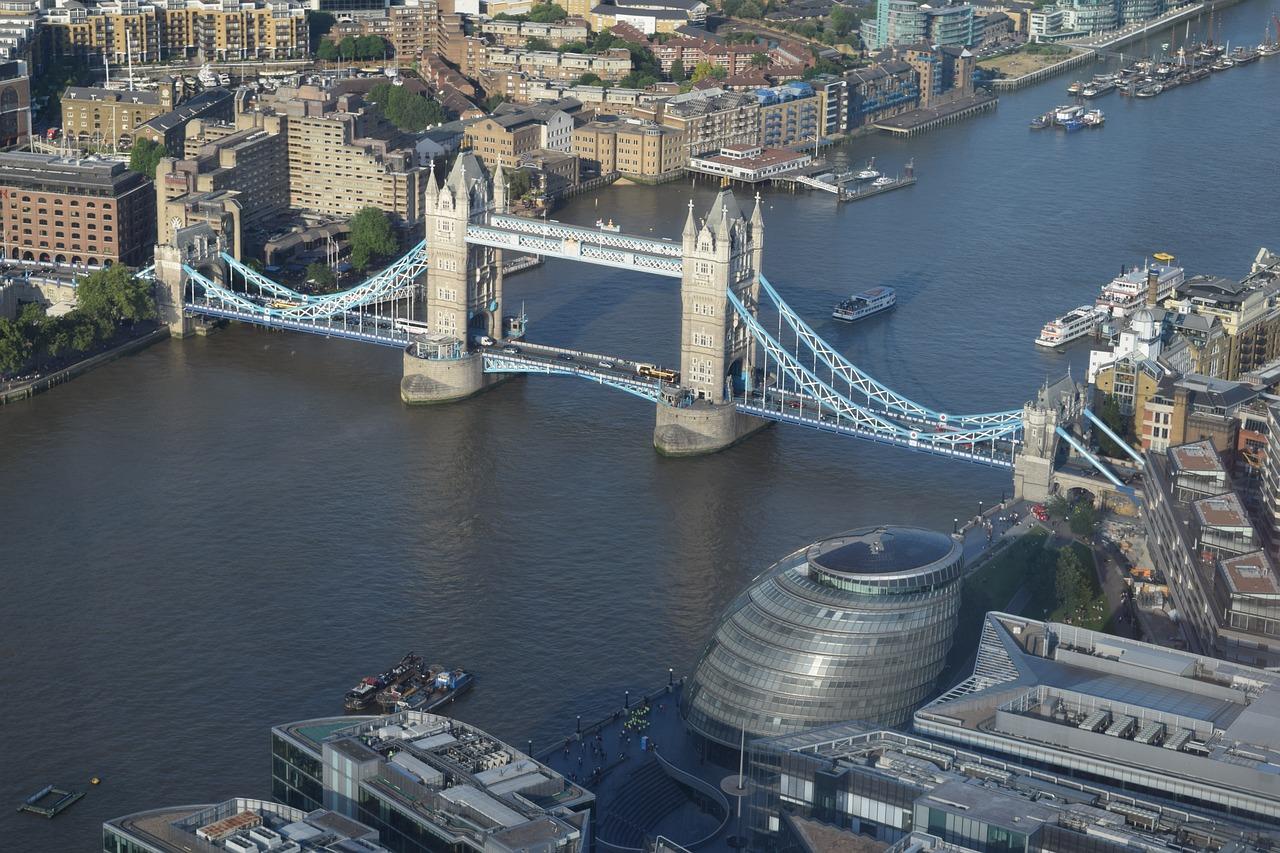
DISCOVER THE HEART OF LONDON'S CAPTIVATING HISTORY AS YOU EMBARK ON A JOURNEY THROUGH TIME. BEYOND THE BUSTLING TOURIST HUBS LIES A TREASURE TROVE OF HISTORICAL GEMS WAITING TO BE EXPLORED. WHETHER YOU ARE A SEASONED HISTORY ENTHUSIAST OR JUST BEGINNING TO UNRAVEL THE CITY'S PAST, LONDON PROMISES AN ARRAY OF FASCINATING SITES THAT WILL LEAVE YOU AWE-
AS YOU STROLL THROUGH THE ANCIENT STREETS, YOU'LL WITNESS LONDON'S HISTORY ETCHED IN ITS ARCHITECTURE. THE GRANDEUR OF WESTMINSTER ABBEY'S GOTHIC STYLE AND THE ELEGANCE OF THE ART DECO BANK OF ENGLAND WILL TRANSPORT YOU BACK TO DIFFERENT EPOCHS. DON'T MISS THE CHANCE TO DELVE INTO THE EVERYDAY LIFE OF YESTERYEARS BY VISITING CHARLES DICKENS MUSEUM OR
UNDOUBTEDLY, ICONIC LANDMARKS LIKE THE TOWER OF LONDON AND THE BRITISH MUSEUM SHOULD BE ON YOUR MUST-SEE LIST. HOWEVER, WITH CONTEXT TRAVEL, YOU CAN DELVE DEEPER INTO LESSERKNOWN YET EQUALLY INTRIGUING HISTORICAL LANDMARKS. UNRAVEL THE SECRETS OF THE TOWER OF LONDON BEFORE THE CROWDS ARRIVE, OR JOIN A SMALL GROUP TO EXPERIENCE THE MARVELS OF THE BRITISH MUSEUM THROUGH THE EYES OF EXPERTS.
BY THE PARLIAMENTARY SOCIETY PRESS OFFICE


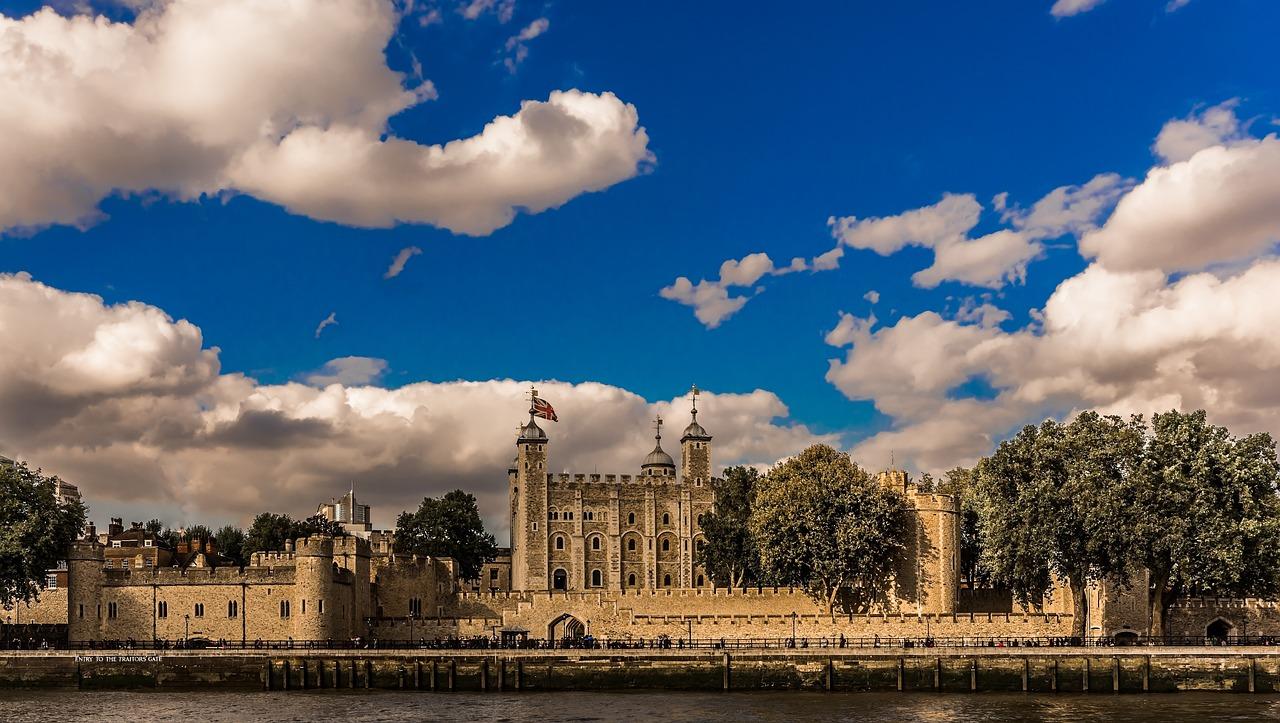


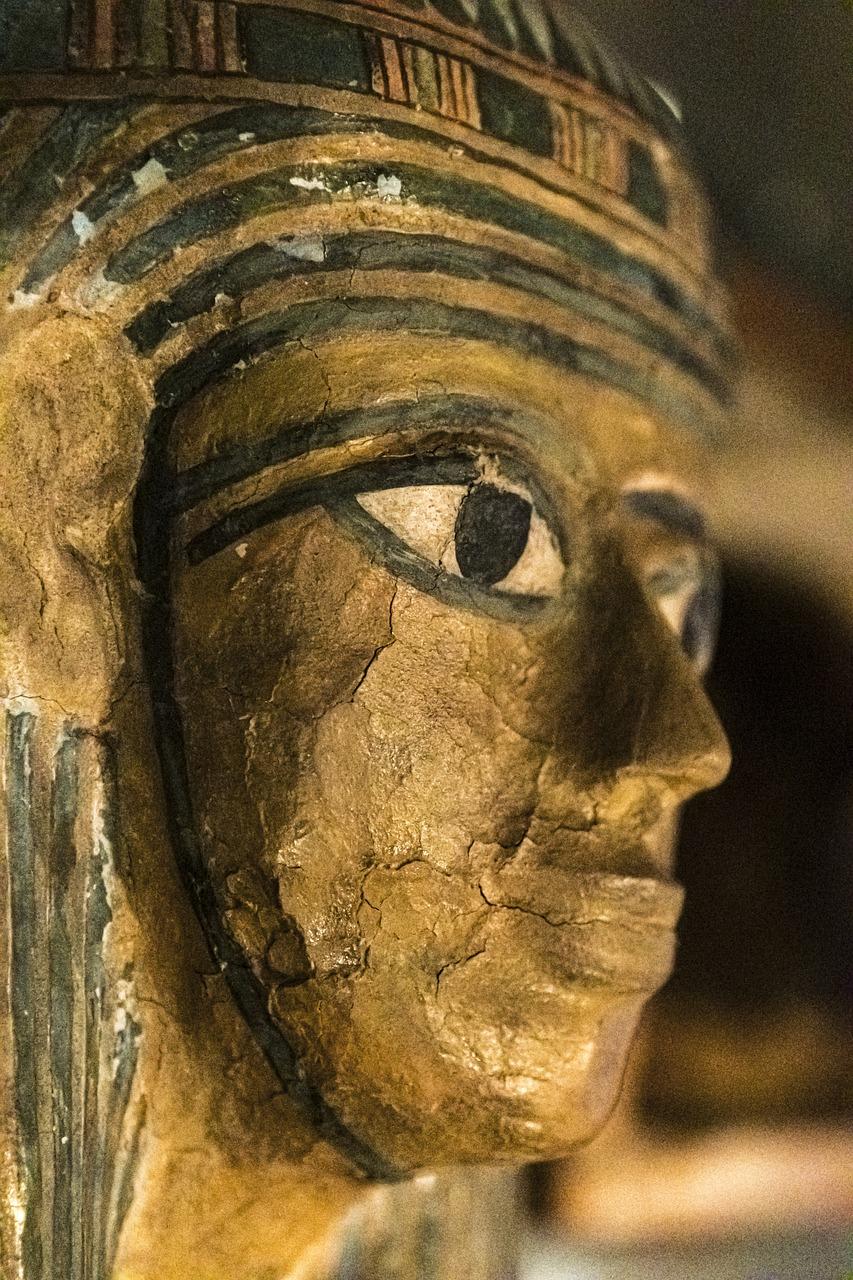

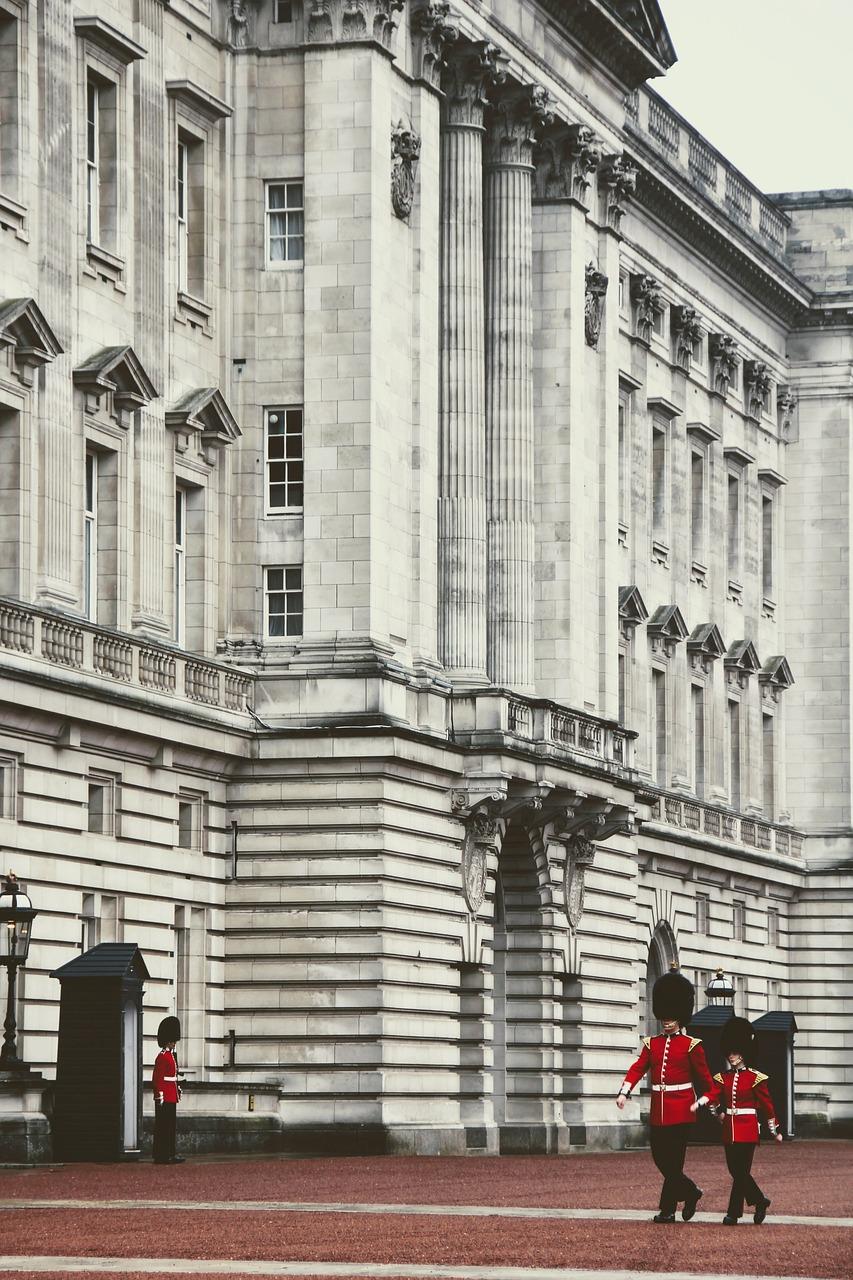







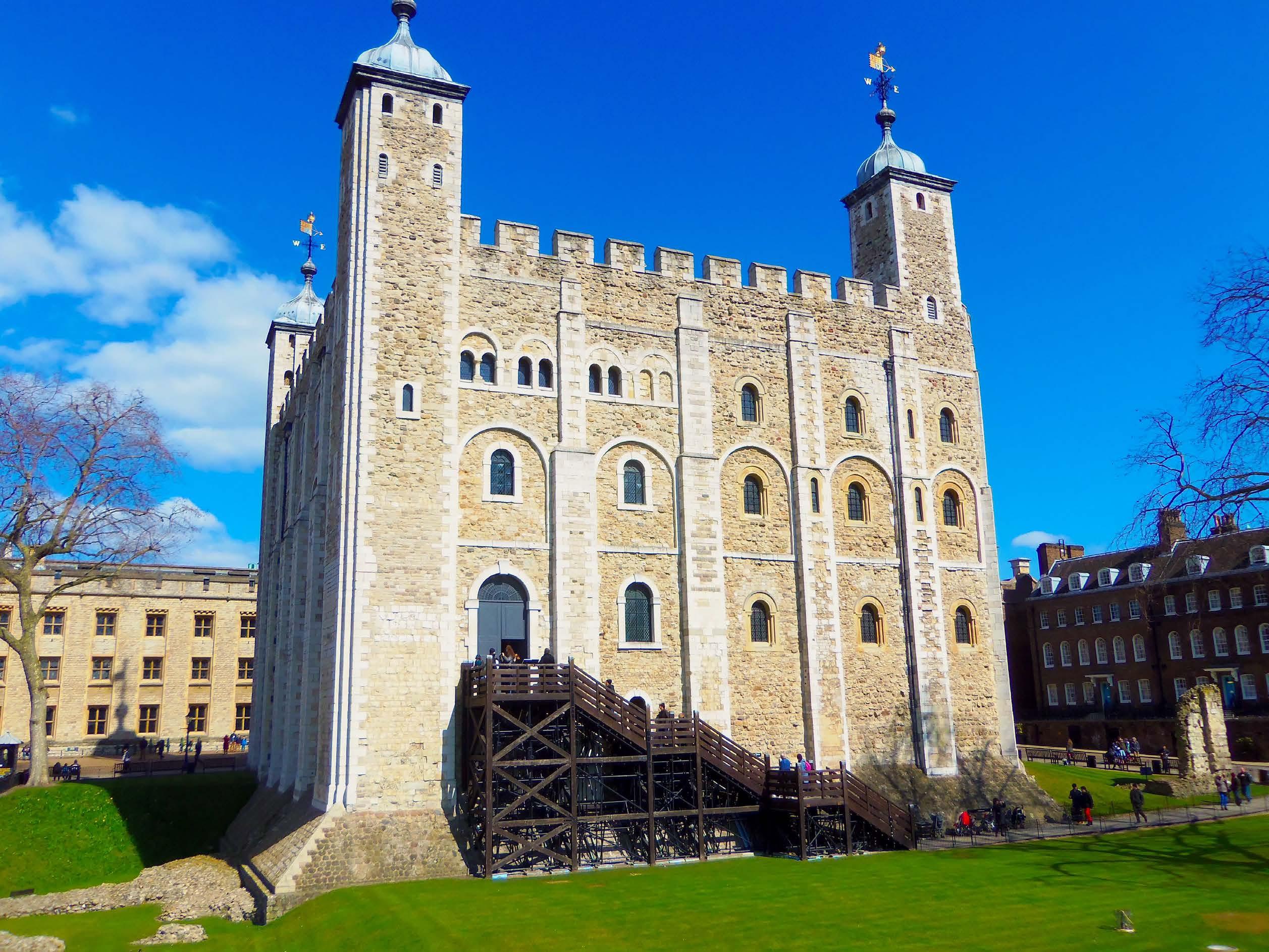


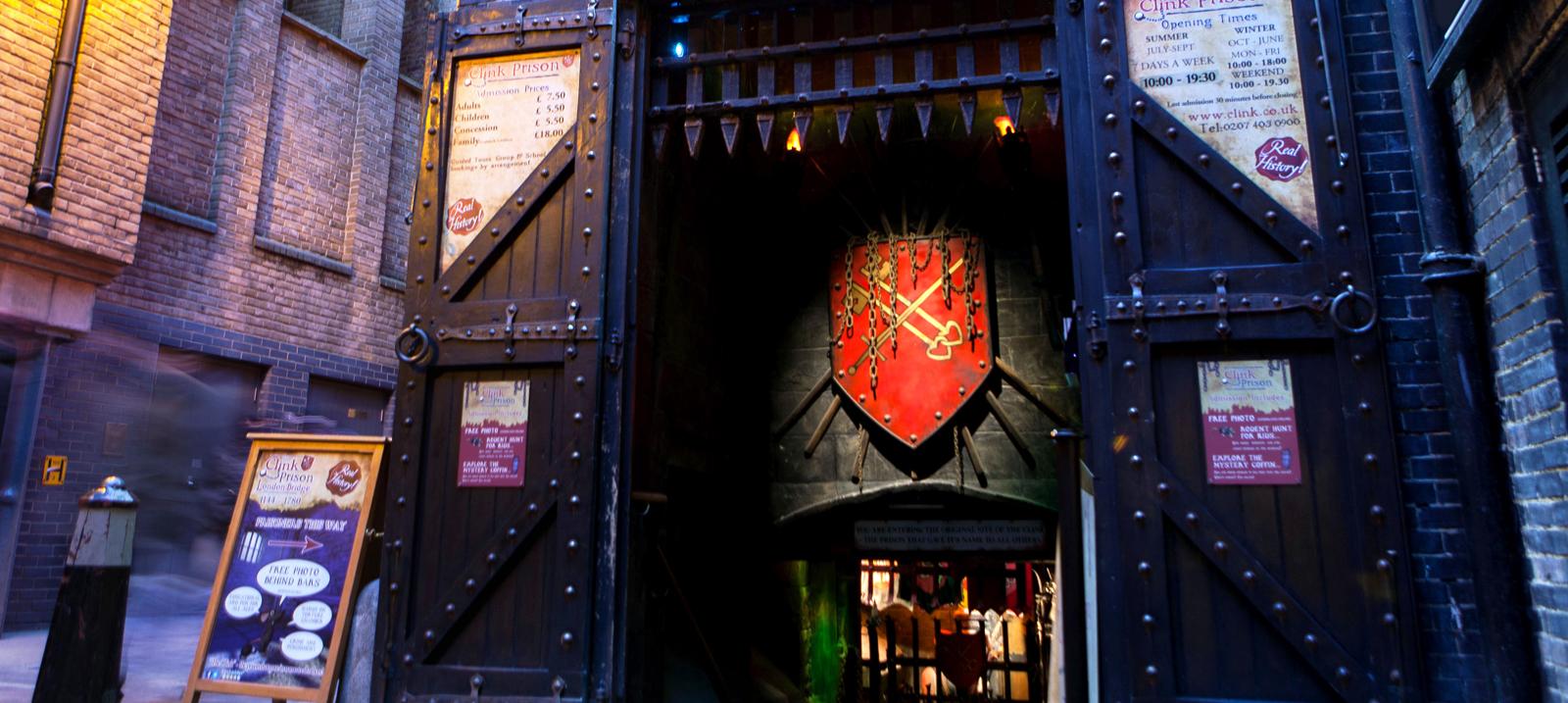




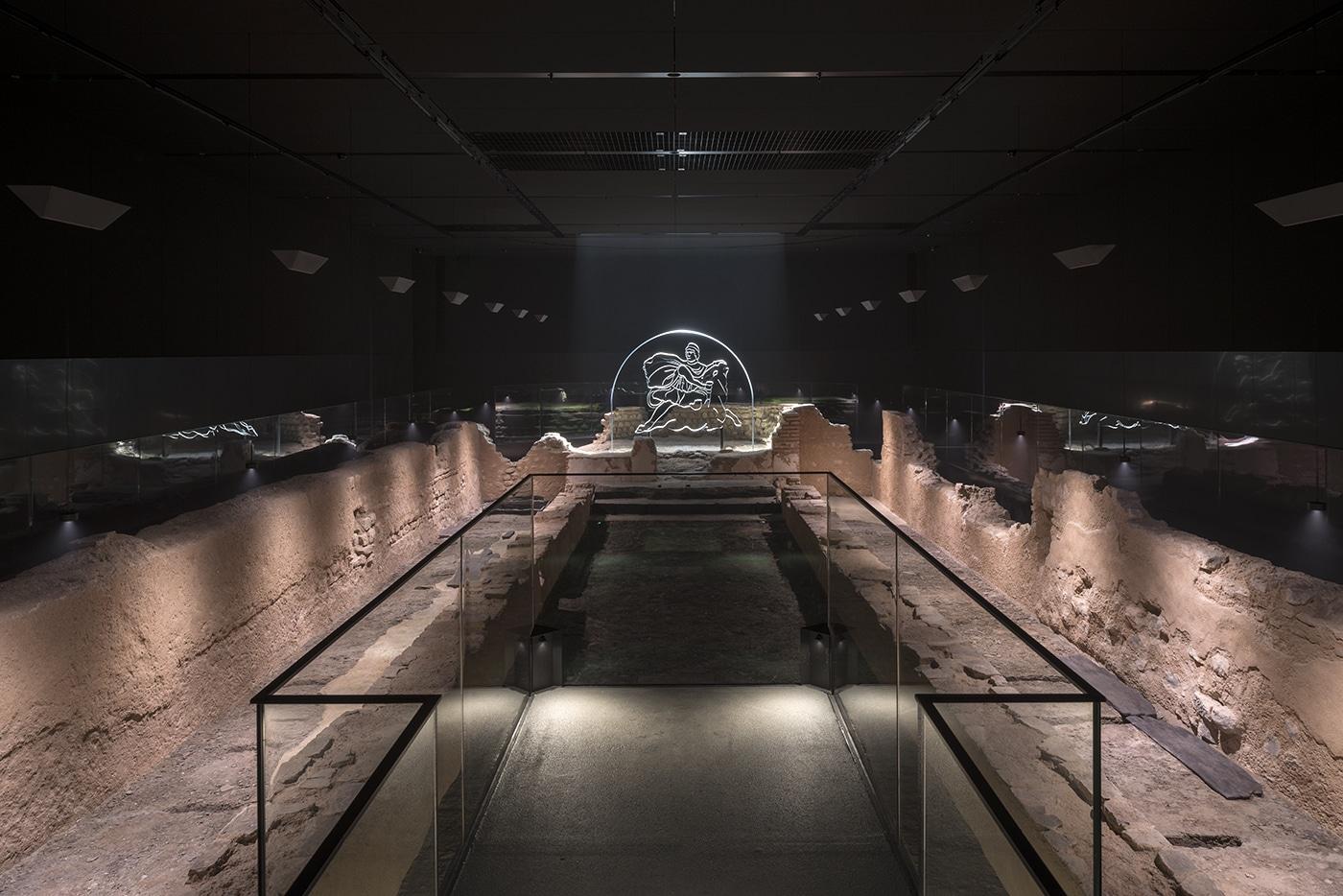

GREENWICH HOLDS THE SECRETS OF LONDON'S MARITIME HISTORY. FROM THE ROYAL OBSERVATORY, GREENWICH MEAN TIME, AND THE PRIME MERIDIAN TO THE OLD ROYAL NAVY COLLEGE AND THE CUTTY SARK, THIS

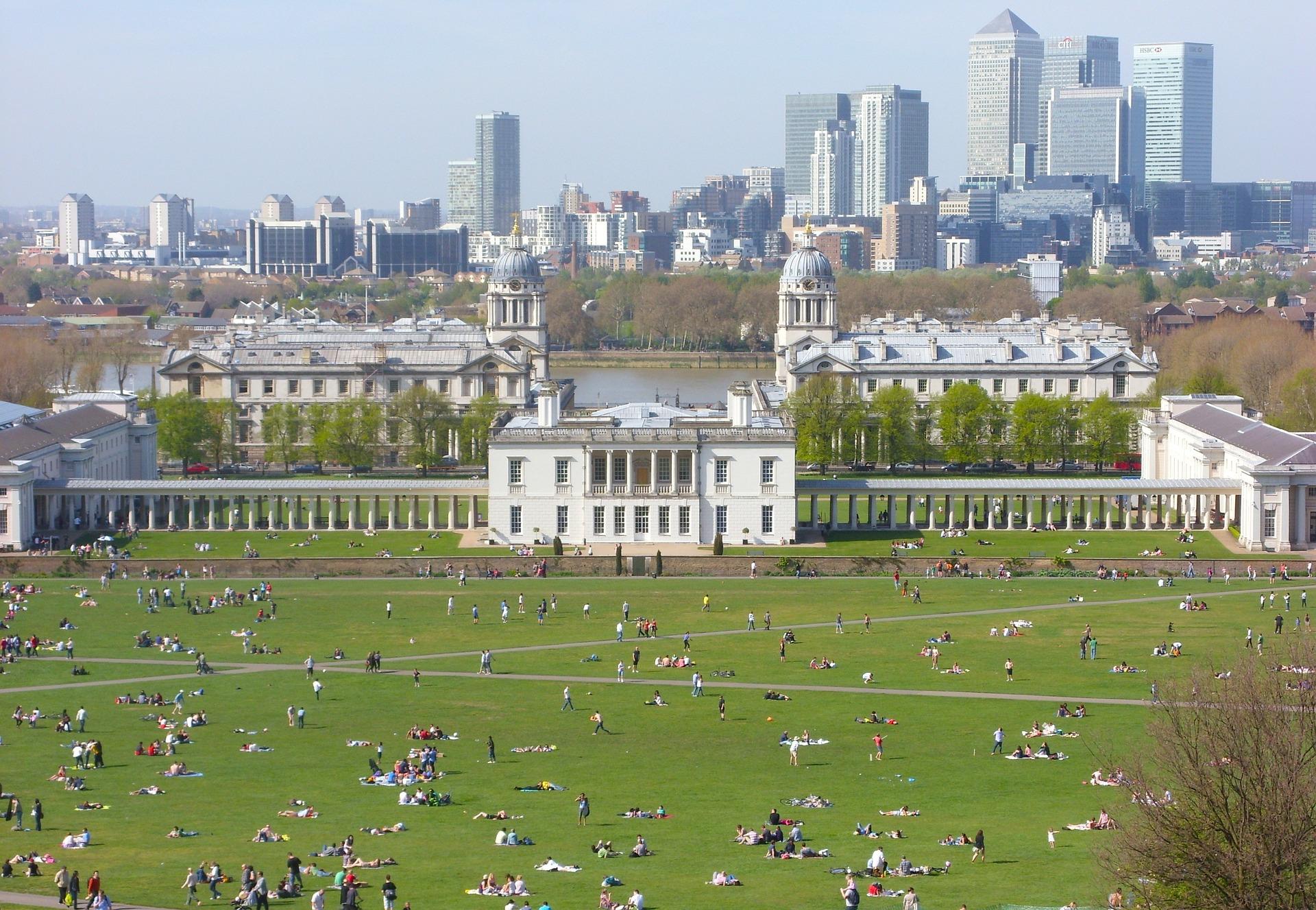
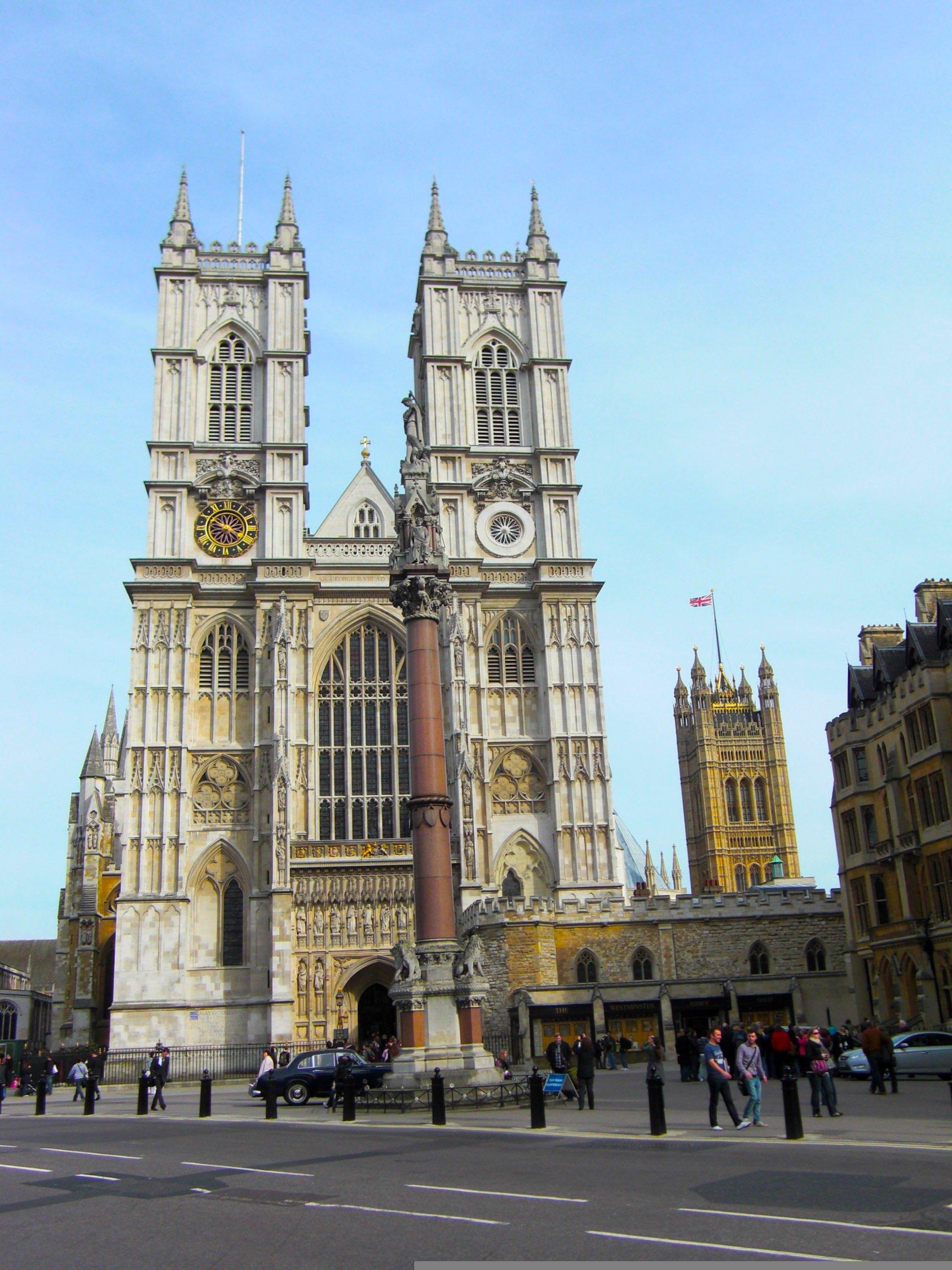

PARLIAMENTARY SOCIETY FOR ARTS, FASHION & SPORTS

FOR MEMBERSHIPS AND PARTNERSHIPS
@parliamentary_society www.parliamentarysociety.com
Special Tanks to
OTHMAN AL OMEIR JOURNALISTIC COUNCIL
ELVIJS PLUGIS
HEAD OF MARKETING FOR THE PARLIAMENTARY SOCIETY FOR ARTS, FASHION AND SPORTS
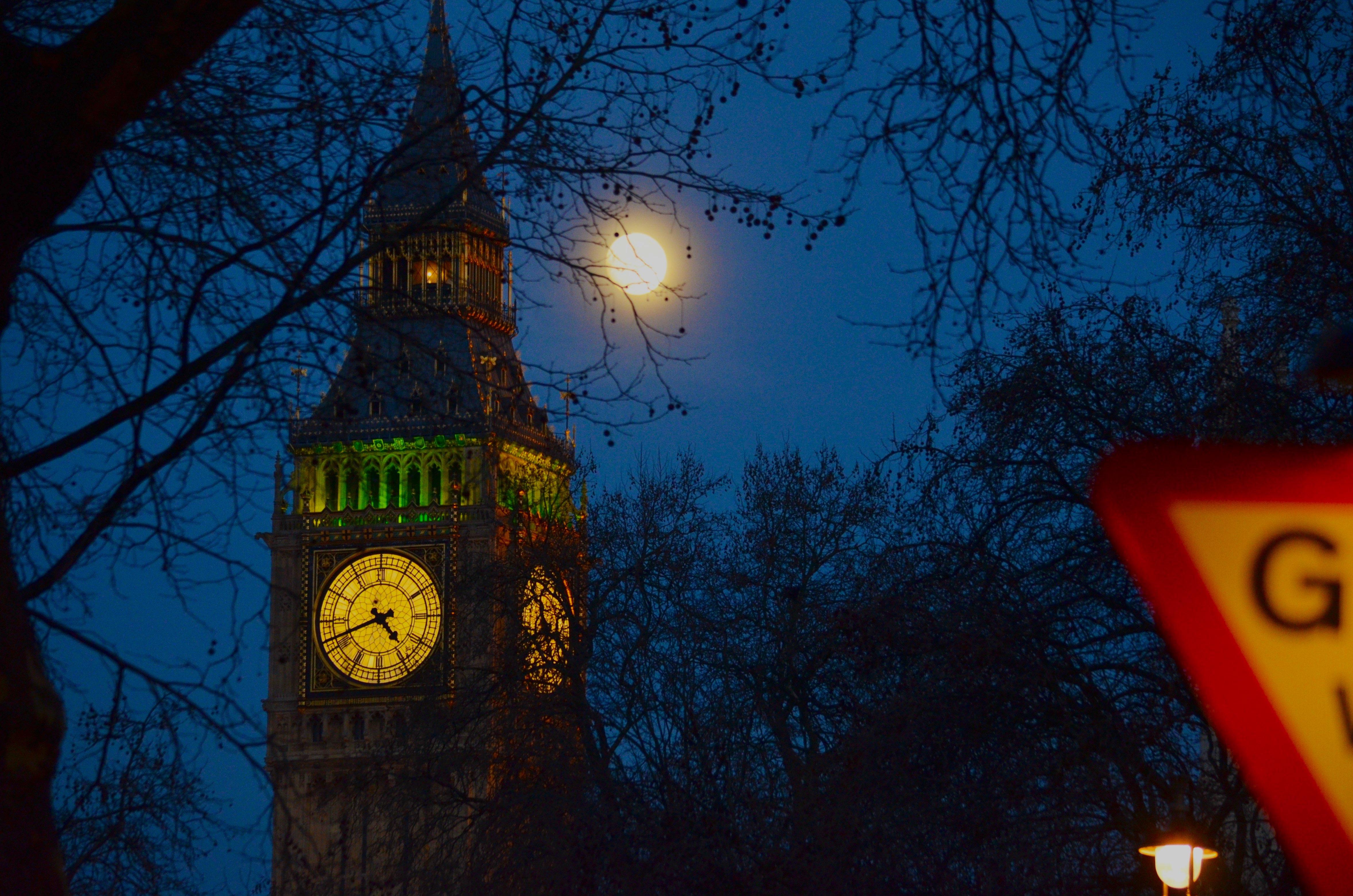
 VICK KRISHNAN BARRISTER
EDITOR IN CHIEF & DIRECTOR
VICK KRISHNAN BARRISTER
EDITOR IN CHIEF & DIRECTOR
Rebeca Riofrio
CHAIRWOMAN FOR THE PARLIAMENTARY SOCIETY FOR ARTS, FASHION AND SPORTS
SEE THIS MAGAZINE ONLINE VERSION ON OUR WEBSITE www.parliamentarysociety.com






 Rebeca Riofrio Editor in Chief Parliament News Magazine
Rebeca Riofrio Editor in Chief Parliament News Magazine

 Photo by Simon Dawson / No10 Downing Street
Photo by Simon Dawson / No10 Downing Street

 UNITY
UNITY






 CHAIRWOMAN
CHAIRWOMAN



















 BY THE PARLIAMENTARY SOCIETY PRESS OFFICE
BY THE PARLIAMENTARY SOCIETY PRESS OFFICE


 J. Robert Oppenheimer (right) with Albert Einstein at the Institute for Advanced Study, 1947.
J. Robert Oppenheimer (right) with Albert Einstein at the Institute for Advanced Study, 1947.























 TURKI ALDAKHIL, JAMEEL ALTHEYABI & DR. IBRAHIM AL-MUHANNA,
TURKI ALDAKHIL, JAMEEL ALTHEYABI & DR. IBRAHIM AL-MUHANNA,











 by Kaja Hussain, CEO at Grozeo
by Kaja Hussain, CEO at Grozeo





 BY ANASTASIA VON SIVERS GEMMOLOGIST, OWNER OF VON SIVERS DIAMONDS AMBASSADOR FOR THE PARLIAMENTARY SOCIETY
BY ANASTASIA VON SIVERS GEMMOLOGIST, OWNER OF VON SIVERS DIAMONDS AMBASSADOR FOR THE PARLIAMENTARY SOCIETY






 BY THE PARLIAMENTARY SOCIETY PRESS OFFICE
BY THE PARLIAMENTARY SOCIETY PRESS OFFICE















 8. THE ROYAL FAMILY OF DUBAI: A TALE OF MODERN OPULENCE
H.H Sheikh Hamdan and his father Sheikh Mohammed bin Rashid Al Maktoum ruler of Dubai and vice-president of the United Arab Emirates
Hassanal Bolkiah ibni Omar Ali Saifuddien III, Sultan and Prime Minister of Brunei
8. THE ROYAL FAMILY OF DUBAI: A TALE OF MODERN OPULENCE
H.H Sheikh Hamdan and his father Sheikh Mohammed bin Rashid Al Maktoum ruler of Dubai and vice-president of the United Arab Emirates
Hassanal Bolkiah ibni Omar Ali Saifuddien III, Sultan and Prime Minister of Brunei





 Crown Prince Mohammed bin Salman and King Salman bin Abdulaziz Al Saud of Saudi Arabia.
Crown Prince Mohammed bin Salman and King Salman bin Abdulaziz Al Saud of Saudi Arabia.

 BY THE PARLIAMENTARY SOCIETY PRESS OFFICE
BY THE PARLIAMENTARY SOCIETY PRESS OFFICE




 Photo Credit Annabel’s Club
Photo Credit Annabel’s Club
 Photo Credit Annabel’s Club
Photo Credit Annabel’s Club
 Photo Credit Annabel’s Club
Photo Credit Annabel’s Club



























 Richard Quinn Designs - Photos from RQ IG
Richard Quinn Designs - Photos from RQ IG
 Richard Quinn Designs - Photos from RQ IG
Richard Quinn Designs - Photos from RQ IG
 Richard Quinn Designs - Photos from RQ IG
Richard Quinn Designs - Photos from RQ IG












 By Jordi Casals
By Jordi Casals






















 VICK KRISHNAN BARRISTER
EDITOR IN CHIEF & DIRECTOR
VICK KRISHNAN BARRISTER
EDITOR IN CHIEF & DIRECTOR